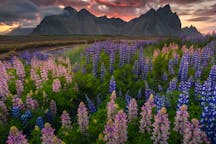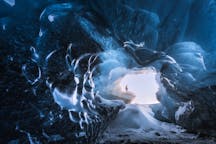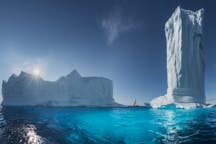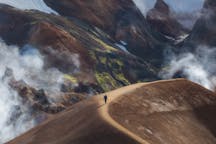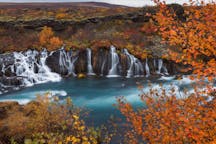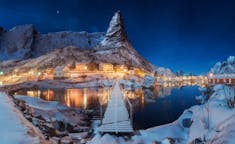
Ultimate Guide to Iceland Photography

- Planning
- Tips for Planning a Photography Trip to Iceland
- The Best Time to Visit Iceland for Photography
- 6 Things to Consider When Joining a Photography Tour
- Gear
- The Best Camera Gear Recommendations for Photography in Iceland
- The Best Lenses for Landscape Photography in Iceland
- A Beginner's Guide to Using Polarising Filters for Photography in Iceland
- Clothing
- What to Wear for Summer Photo Tours in Iceland
- What To Wear For Winter Photo Tours in Iceland
- Camera Settings
- A Beginner’s Guide to Exposure for Landscape Photography in Iceland
- When to Use High ISO for Landscape Photography in Iceland
- Tips & Techniques
- 4 Popular Photography Techniques To Try In Iceland
- 5 Advanced Landscape Photography Techniques to Try in Iceland
- 7 Easy Steps to Achieve Amazing Long Exposure Photography in Iceland
- 5 Key Reasons to Use a Wide Angle Lens in Iceland
- HDR Photography in Iceland | Exposure Blending for Beginners
- A Practical Guide to Golden Hour Photography in Iceland
- Capturing Landscapes
- 10 Essential Tips for Landscape Photography in Iceland
- The Ultimate Guide to Photographing the Aurora in Iceland
- How to Photograph the Waterfalls of Iceland
- A Survival Guide for Photographing at the Coast in Iceland
- Photographing Waves in Iceland | In Field to Post Processing
- How to Photograph Rainbows in Iceland
- Locations
- Top 5 Geothermal Areas in Iceland for Photography
- 9 Best Places for Landscape Photography in Iceland
- 7 Must See Landscape Photography Locations in the Icelandic Highlands
- The Best Waterfalls for Photography in Iceland
- All You Need to Know About Photography at Hvitserkur in Iceland
- The Ultimate Field Guide to Photography at Kirkjufell in Iceland
- Everything you Need to Know About Photography at Vestrahorn
- Tips and Tricks for Photographing The Sun Voyager in Reykjavik
- How to Photograph the Diamond Beach in Iceland
- Complete Guide to Photography at Reynisfjara Black Sand Beach
- Complete Travel Photography Guide to Seljalandsfoss Waterfall
- Complete Guide to Photography at Hraunfossar Waterfall in Iceland
- Key Tips for Photography at Jokulsarlon Glacier Lagoon
- The Ultimate Guide to Photographing Ice Caves in Iceland
- Travel Photography Guide to the Westfjords of Iceland
- Capturing Wildlife
- Wildlife Photography Guide | How to Shoot Great Pictures of Animals in Iceland
- Complete Guide to Photographing Puffins in Iceland
- The Best Places to Photograph Puffins in Iceland
- The Essential Guide to Photographing the Icelandic Horse
- Where to Photograph Lupines and Wildflowers in Iceland
- Drone & Aerial
- Aerial Photography in Iceland | Drones vs Helicopters and Planes
- 5 Reasons Why Iceland is the Best Destination For Aerial Photography
- Which Drone Should You Take To Iceland?
- The Top 10 Spots in Iceland to Fly Your Drone
- 5 Useful Tips For Flying a Drone in Iceland
- Top Tips For Travelling to Iceland With Your Drone
- What Are the Rules For Flying a Drone in Iceland?
- The Best Drone Accessories to Take to Iceland
- The Biggest Mistakes When Flying Your Drone in Iceland
- How to Fly a Drone in Iceland Without Annoying People
- Weather
- What to Photograph in Iceland Through the Seasons
- What it's Like to Photograph Iceland in September
- 8 Tips for Photographing Fall Colours in Iceland
- 8 Things to Know About Photographing Iceland in Winter
- Why Iceland is the Perfect Place for Midnight Sun Photography
- Post-Processing
- How to Back Up Photos While Travelling in Iceland

Iceland is one of the best places for landscape photography. We are talking about mountain peaks covered in snow. Even waterfalls straight out of a fantasy novel and fjords that feel magical and romantic. On top of that, it's one of the best places to capture the Aurora Borealis and night skies above you. You’ll also have access to very specific wildlife, spectacular fauna and flora.
- Join us on this 11 Day Iceland in Autumn Photography Workshop
This location in the Northern Hemisphere is unlike no other. Whether coming on a tour or on your own steam, there is something for everyone.
Read our complete guide here to get a taste of what you can expect and how to photograph every little detail. Iceland photography is a topic that attracts many appreciators but only when done right.
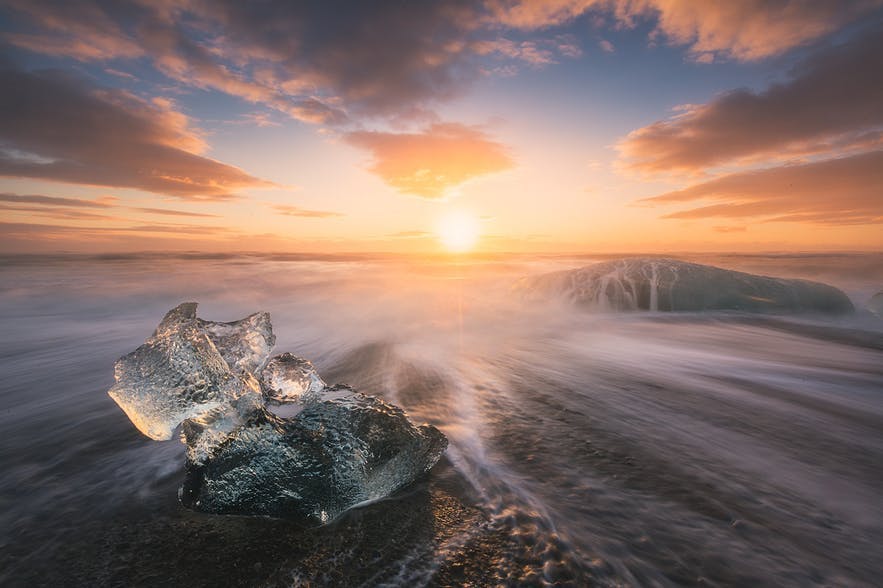 Water swirls around ice on an Icelandic beach. Photo by: 'Iurie Belegurschi'.
Water swirls around ice on an Icelandic beach. Photo by: 'Iurie Belegurschi'.
Planning
Tips for Planning a Photography Trip to Iceland
If Iceland is on your photography bucket list, then this is your first port of call. Every location on the planet requires a little planning, otherwise you'll just be winging it. As this is a very special location, you'll want to make sure that you get the very best out of your trip.
Here, we have all the information you need to get started – not only for what to expect from this wintery island but also when the best time is to come for all your landscape photography needs.
You’ll find itineraries for up to a week's worth of tips and advice. We will look at what you should wear, depending on the time you are planning your trip. Iceland photography needs a little forethought.
The most important to you is what camera gear and devices we recommend you bring. We have all the knowledge here, as we live, work and present tours from this magical place.
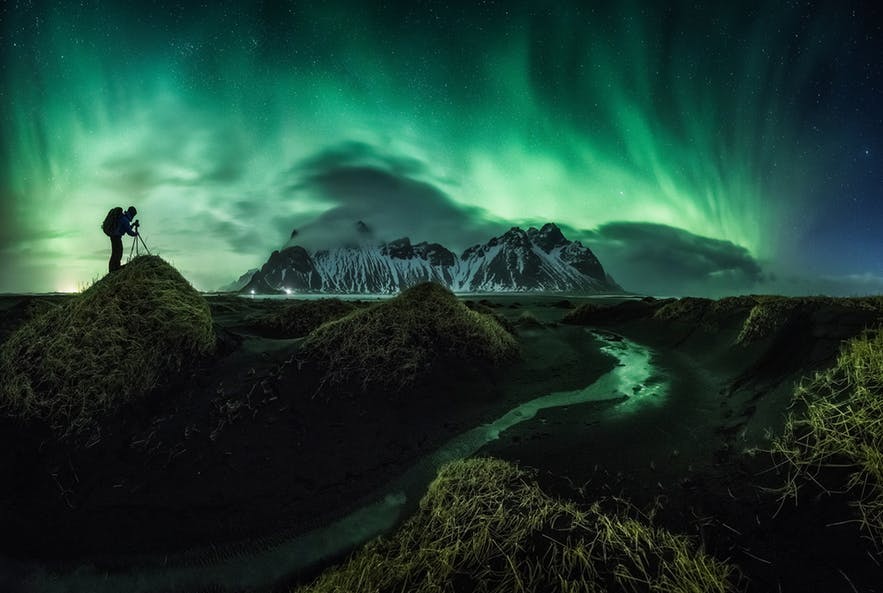 The Northern Lights start becoming visible again in autumn. Photo by: 'Albert Dros'.
The Northern Lights start becoming visible again in autumn. Photo by: 'Albert Dros'.
The Best Time to Visit Iceland for Photography
Believe it or not, Iceland has different seasons. The main seasons for photography are winter, autumn and summer. You might imagine it to be cold and snow-blanketed all year round, though this couldn't be further from the truth.
Even in the hottest month, you can expect a temperature of 14° Celsius (57° Fahrenheit). This may make you want to break out the swimming costume and get ready for sunbathing just as the Icelanders do.
Spring might be beneficial for some people. The days are a little more normal and the flora starts to show through frosted lands.
Summer brings the wave of tourists. This might make landscapes a little more difficult to photograph without the constant flow of people.
Here you’ll find all the information you need on the best time for your visit. Time might give you the best Iceland photography you could dream of.
 A photo tour is a great time to develop your own photography style. Photo by: 'Iurie Belegurschi'.
A photo tour is a great time to develop your own photography style. Photo by: 'Iurie Belegurschi'.
6 Things to Consider When Joining a Photography Tour
One way to best capture Iceland photography is by joining a photography tour. Luckily for you, we are one of the best when it comes to both photography and tours.
We have access to locations, knowledge and experience with photography techniques. Also, when to capture and what to look for. You do want stunning Iceland pictures, right?
By joining a photography tour, there are things you need to consider. Many things are already organised for you. Guides share their knowledge and experiences, helping you capture better Iceland landscape photography.
Joining an Iceland photography tour is much safer than going on your own. By traveling with guides, they know what you can and can’t do. This can be helpful in some areas off the beaten track.
Knowing the limitations of each area allows you to push your boundaries and get out of your comfort zone. There is no better way to do this than when surrounded by Iceland location and photographic experts.
This is a great way to get creative. It will help you to capture those mouth-watering Iceland landscape scenes – the ones you always see others capturing. New environments bring new challenges. At the end, you'll have great Iceland pictures to add to your landscape photography portfolio.
 Try new photography techniques during your photo tour. Photo by: 'Iurie Belegurschi'.
Try new photography techniques during your photo tour. Photo by: 'Iurie Belegurschi'.
Gear
The Best Camera Gear Recommendations for Photography in Iceland
There are a ton of different cameras that you can use for landscape photography. So how do you choose the right one, not just for the location and subjects, but also for you?
Whichever system you are looking at using, be thankful that you live in the best time for choice. Never before have there been so many choices in lenses, bags or other devices, whether you are on the hunt for the best Iceland pictures or not.
The biggest benefit is the size of the equipment. Cameras are getting smaller and lighter. These attributes allow you to store them easily. You can traipse around easier without gear becoming a burden.
Iceland photography comes with a challenge. This is a location that offers you luminous landscapes, wandering wildlife, and fantastic flora. Finding a system that can cover a few or most of these themes is tricky.
We have all the information for you here. From the best systems for travel to the ones that will bear the brunt of the cold and adverse weather. If you have lenses that you just can't separate from, then start there and work towards the camera system that works around it.
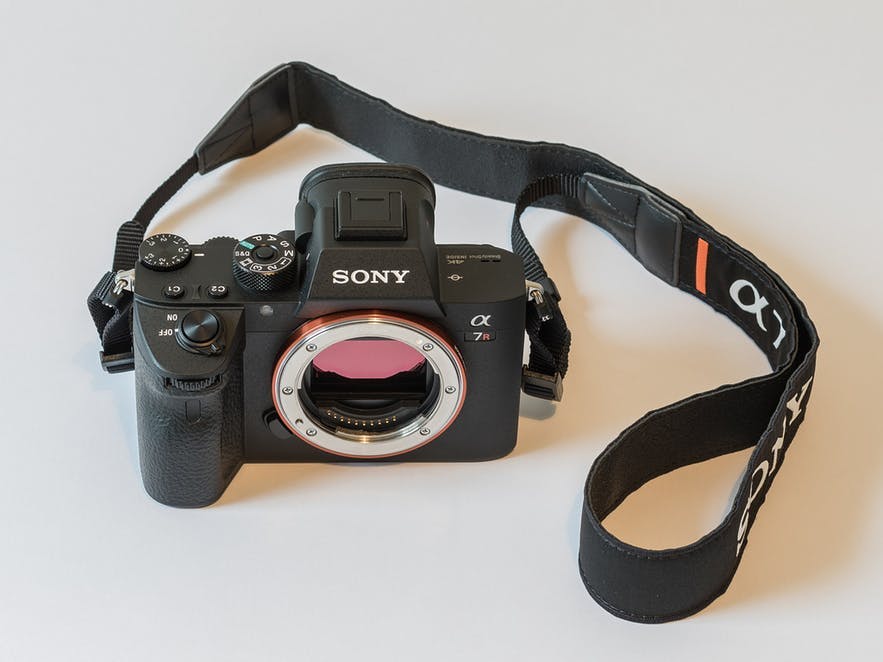 Sony A7RIII. Photo by: 'A.Savin, Wikimedia Commons'.
Sony A7RIII. Photo by: 'A.Savin, Wikimedia Commons'.
The Best Lenses for Landscape Photography in Iceland
Choosing the right camera for the environment you plan on shooting in is important. There are many settings that can appear in some camera bodies that others don't have.
Aside from the camera body, you'll also need to think about camera lenses. Some rightly believe that camera lenses are more important than the camera you use them with.
In many ways, this is true. Lenses determine focal lengths, apertures and many other things that the camera body doesn’t.
For the best Iceland pictures, you need to research what you want to capture. Then you can understand the lenses you will benefit most from. Awe-inspiring Iceland photography comes from pre-production, not just post.
Reading our article here will give you an idea of what lenses will benefit your Iceland landscape photography.
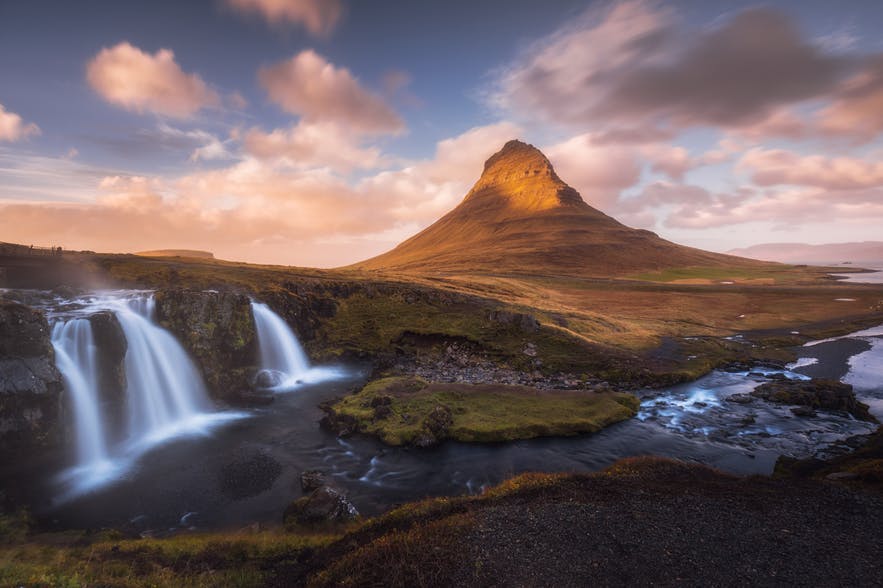 A wide angle lens allows you to fit an entire mountain like Kirkjufell into your frame. Photo by: 'Iurie Belegurschi'.
A wide angle lens allows you to fit an entire mountain like Kirkjufell into your frame. Photo by: 'Iurie Belegurschi'.
A Beginner's Guide to Using Polarising Filters for Photography in Iceland
Filters are a beneficial addition to landscape photography. Iceland photography is no different. In fact, filters may be a necessity due to the winter weather. Blankets of snow and ice may cause overexposed areas in the scene.
A polarising filter is just one of the most important filters you need for successful Iceland pictures. This little piece of glass gives you the chance to reduce reflections and boost colours. It does this while downplaying overexposed areas, which is helpful for that typical Iceland landscape.
You will notice the effects of a polarising filter in the skies, where they will darken if too bright. Green areas of the landscape will see an increase in saturation. Photographing water will become easier on the eyes.
We have all the information on why polarising filters can benefit landscape photography in Iceland. Then expect blue skies and beautiful pictures of Iceland.
 A polarising filter is perfect for enhancing tones in the Icelandic Highland. Photo by: 'Iurie Belegurschi'.
A polarising filter is perfect for enhancing tones in the Icelandic Highland. Photo by: 'Iurie Belegurschi'.
Clothing
What to Wear for Summer Photo Tours in Iceland
Iceland might only have two seasons (cold and colder) but each one needs a different approach. After all, there is no reason to dress heavily if you expect strong natural light.
If you plan on capturing Iceland photography during a tour in summer, read on. You’ll find that our clothing suggestions will benefit you, helping to save money and luggage space.
Start off by expecting that the warmest months are coming between May and September. When we say warm, we mean mild. There will be a change from Celsius degrees in the 0’s to the late 10’s.
As it is slightly warmer, you’ll experience the reappearance of green landscapes and foliage. Due to the adversity in weather, you will need versatile clothing. You’ll need warmth and rain protection, while allowing you to carry items if need be.
In our article here, you’ll find a concise and thorough look at the items that will help you keep your comfort. Especially handy when capturing landscape scenes.
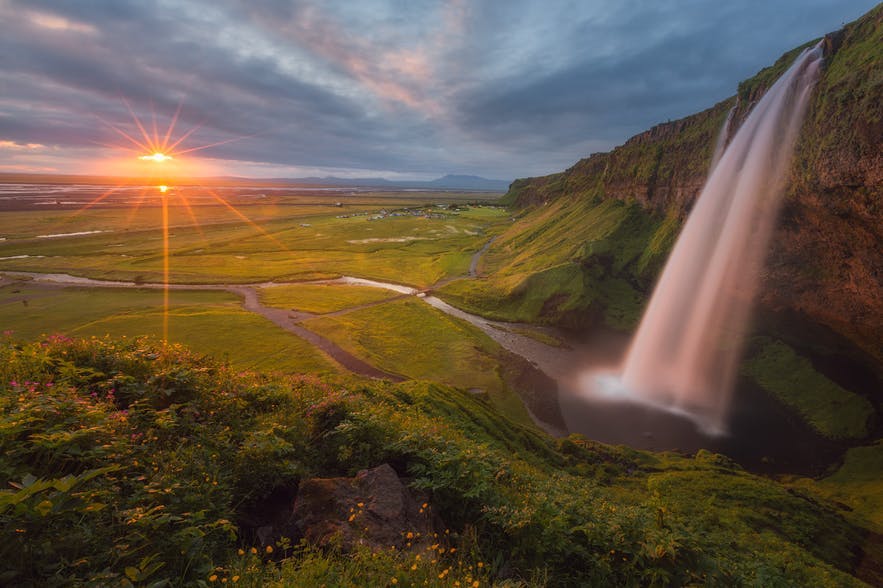 Seljalandsfoss in summer. Photo by: 'Iurie Belegurschi'.
Seljalandsfoss in summer. Photo by: 'Iurie Belegurschi'.
What To Wear For Winter Photo Tours in Iceland
Most people picture Iceland as a winter wonderland. A blanket of snow and ice covered fjords. It hides beautiful flora and forces local wildlife into hibernation. They are right of course but there is so much more to capture than an indefinite expanse of white.
With the snow and ice comes the cold. The cold has the capacity to cut your landscape photography session in Iceland short. You can quickly become uncomfortable and frustrated when you are not warm enough. Plus, your comfort rating will fall through the floor.
Having the right clothing for cold, Iceland photography is as important as having the right camera gear. You want the best experience possible. So go through our article on what we recommend for winter Iceland photography tours.
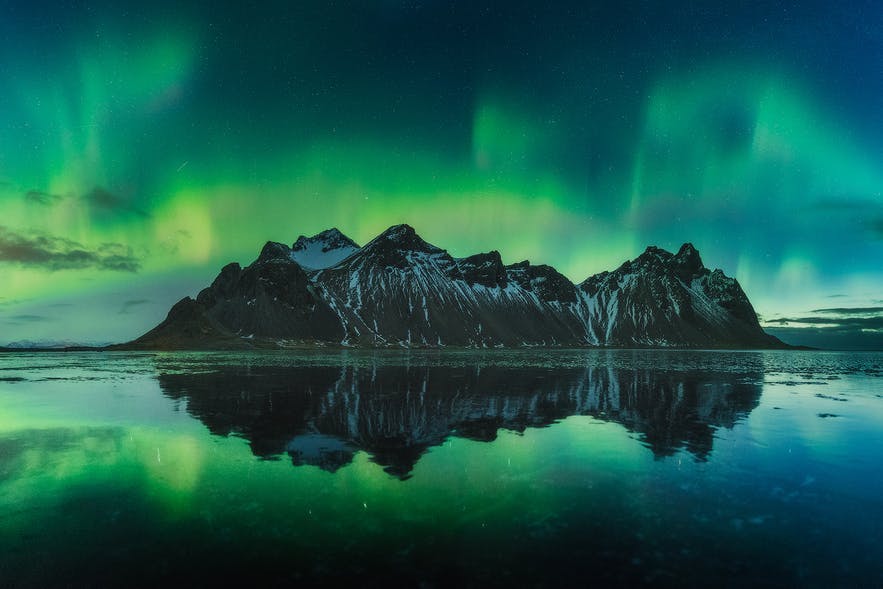 When you're standing outside at night shooting the Northern Lights, you'll want to be warm! Photo by: 'Iceland Photo Tours'.
When you're standing outside at night shooting the Northern Lights, you'll want to be warm! Photo by: 'Iceland Photo Tours'.
- See also: 4 Day Summer Photo Workshop in Iceland
Camera Settings
A Beginner’s Guide to Exposure for Landscape Photography in Iceland
Exposure is one of the most important aspects of photography. Without a correct exposure, expect overexposed or underexposed areas throughout your images. That’s even if you manage to capture something at all.
The exposure is how you and your camera utilise the light within any given scene. With Iceland landscape photography, there are many ways you can use the light falling in and around your scene.
For those beginners out there, obtaining a correct exposure is paramount. Even better if it fits your photographic style. Aperture, shutter speed and ISO are combined with each other to make the best use of the light.
Raising or lowering the number of one will double or halve the light you capture. All three have separate attributes that present different outcomes, depending on how you use them. You need them for the best Iceland pictures possible.
Make sure you brush up on the exposure settings for landscape photography. You can do that here from our article. Expect beautiful Iceland pictures from here on out.
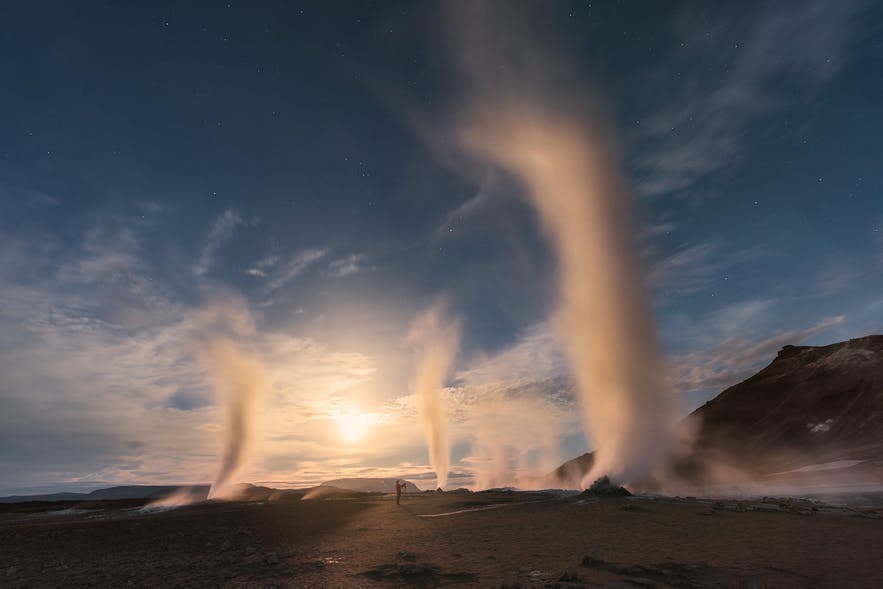 Choose the exposure mode that suits the scene best. Photo by: 'Iurie Belegurschi'.
Choose the exposure mode that suits the scene best. Photo by: 'Iurie Belegurschi'.
When to Use High ISO for Landscape Photography in Iceland
The ISO is one setting that many beginner and enthusiast photographers overlook. After all, there are program modes for Aperture and Shutter Speed. There isn't anything that really focuses on the sensitivity of the sensor you are using.
For resolution, the ISO is instrumental in giving you the best quality image possible. ISO 50 or 100 will give you a sharper and more detailed image than a scene captured at ISO 3200.
Without the use of long exposures, low light scenes will force you to raise the ISO setting on your camera. This is to allow that tiny amount of ambient light to magnify itself, allowing you to see more of the scene.
High ISOs are used for other creative reasons when capturing and photographing landscape scenes. Read our article here to see if and how it can benefit your work.
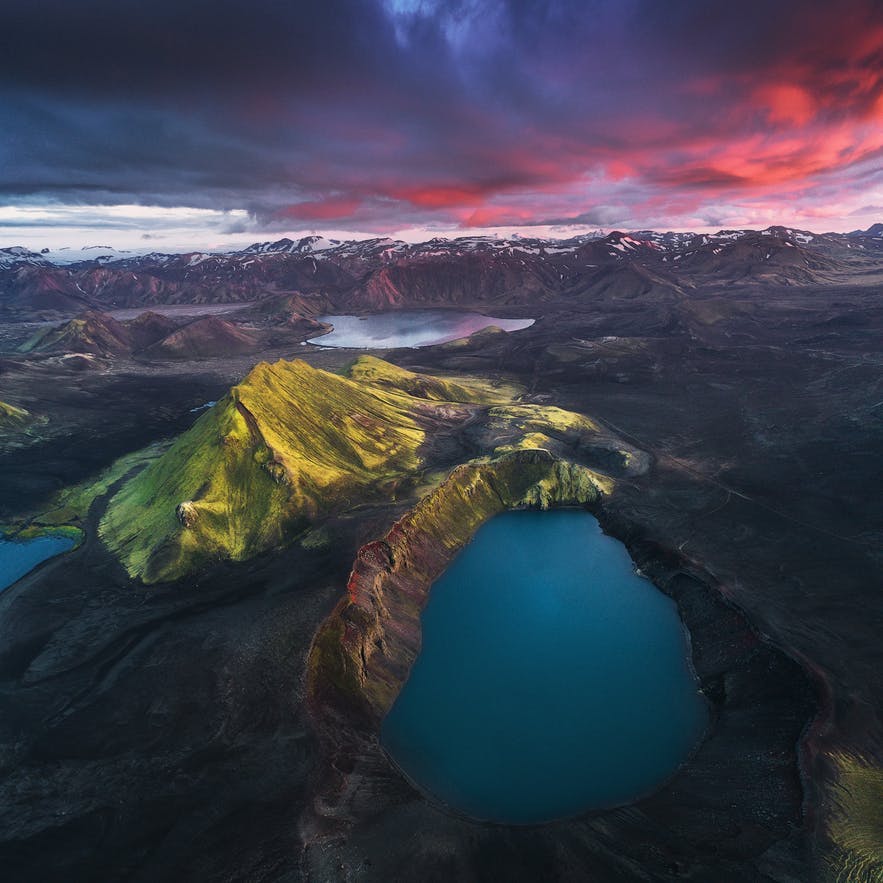 A higher ISO can minimise camera movement for aerial photography. Photo by: 'Iurie Belegurschi'.
A higher ISO can minimise camera movement for aerial photography. Photo by: 'Iurie Belegurschi'.
Tips & Techniques
4 Popular Photography Techniques To Try In Iceland
As photographers, we are constantly looking for new ways to make our photography easier. We look at producing better and better results. Some techniques will get you out of a jam, others will add to your scene. They all allow you to work in any and all situations that come your way.
The more techniques you have under your belt, the better. They get you one step closer to mastering your gear and the scenes you shoot. In our article, we look at the four most popular photography techniques you can use when photographing landscapes.
One that is easily overlooked is that of Time-lapse photography. Here, you are able to create a video from a succession of still images. It can be a great way to show a scene or environment in a completely different way.
Read here for four great techniques to help you improve your landscape photography.
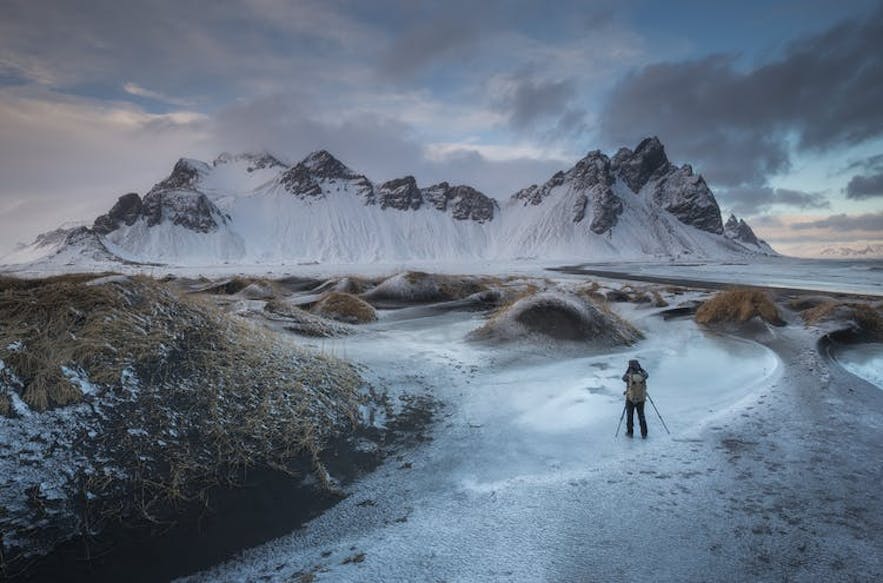 Iceland is rich with all types of landscape features for many different techniques. Photo by: 'Iurie Belegurschi'.
Iceland is rich with all types of landscape features for many different techniques. Photo by: 'Iurie Belegurschi'.
5 Advanced Landscape Photography Techniques to Try in Iceland
There are some techniques you might be familiar with. Long Exposures, Time-lapse photography, Panoramas and Night Time photography are some of the basic ones. We have more advanced techniques for you right here.
Scouting your locations beforehand allows you to concentrate your time on a select few scenes. Knowing that you’ll capture five or six different areas well is much better than showing up and hoping for the best.
By visiting the locations first, you are able to find the best vantage point possible. It will then make it easier to map your movement from one place to another. It will save you precious time.
You will also see how the natural light hits the scene, letting you know what time of day will help each shot the best. You’ll also notice in which areas will need a tripod, or other gear items such as filters or specific lenses.
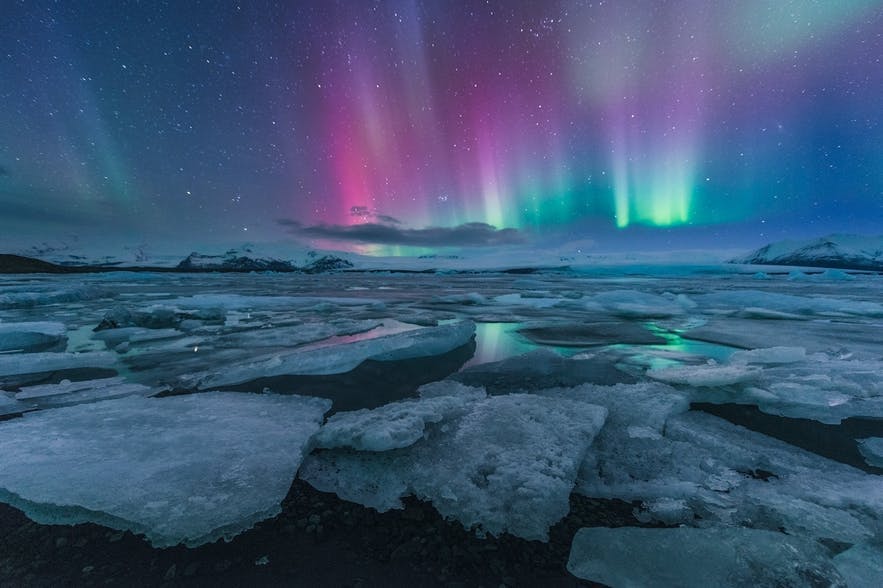 Scout for locations before you shoot at night. Photo by: 'Iurie Belegurschi'.
Scout for locations before you shoot at night. Photo by: 'Iurie Belegurschi'.
7 Easy Steps to Achieve Amazing Long Exposure Photography in Iceland
Long exposures have been part and parcel of landscape photography for a long time. You can use this technique for many different reasons, both during the day and night.
For one, it offers you a dynamic look at any scene with moving elements. Clouds and waves become blurs rather than super focused parts of your scene that can distract.
Long exposures during the daylight will require a Neutral Density filter. It helps to bring the light down to a manageable level. Some photographers use a technique such as this to remove people from landscape scenes.
This is something that will help you in your search for that perfect, tourist-less shot of the Blue Lagoon. Other than that, it can smooth out clouds, and give the Skógafoss waterfall a mystical cotton wool effect.
Follow our seven easy steps on obtaining the best long exposures for your landscape photography.
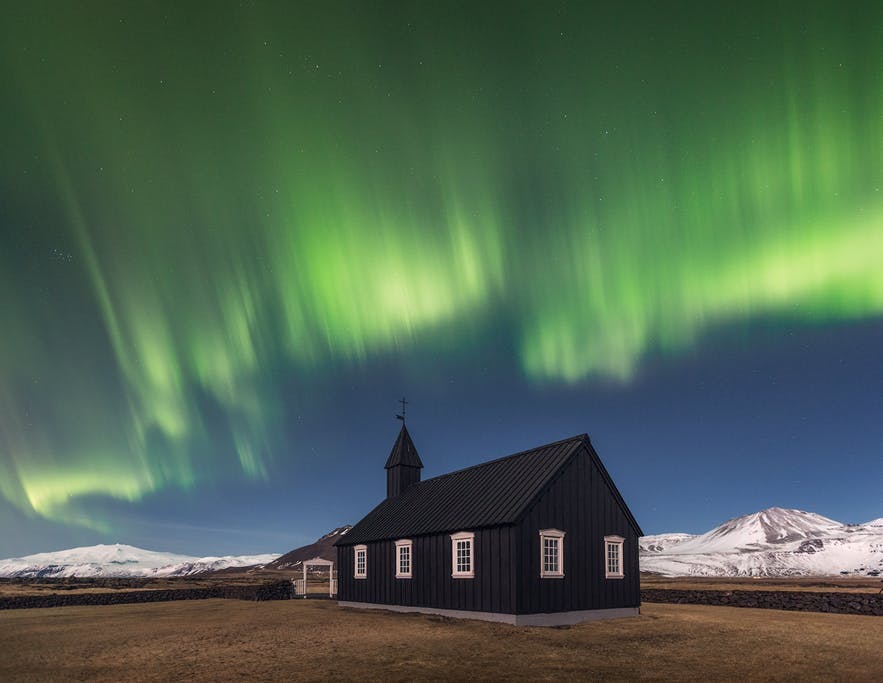 Northern Lights over the Black Church of Budir. Photo by: 'Iurie Belegurschi'.
Northern Lights over the Black Church of Budir. Photo by: 'Iurie Belegurschi'.
5 Key Reasons to Use a Wide Angle Lens in Iceland
You may come across multiples of lenses across your search for the perfect glass. However, there are only a handful of different types of lens to choose from.
All lenses fit into one of two groups. They are either fixed focal length lenses (prime) or variable length lenses (zoom). In these two groups, you'll find wide-angle, standard and telephoto lenses. Each give you a unique perspective, focal length and focal range to work with.
Most landscape images are taken with a wide-angle lens (14-35 mm) or a standard lens (35-70 mm). This is down to their field of view, which allows for more of the landscape in one shot.
With a wide angle lens, expect to capture some landscape foreground elements in a shot of the night time sky. A shot of a waterfall will come with some of the surrounding area, giving the feature a better placement.
Read here for the five key reasons why a wide angle lens is great for landscape photography. Especially in Iceland.
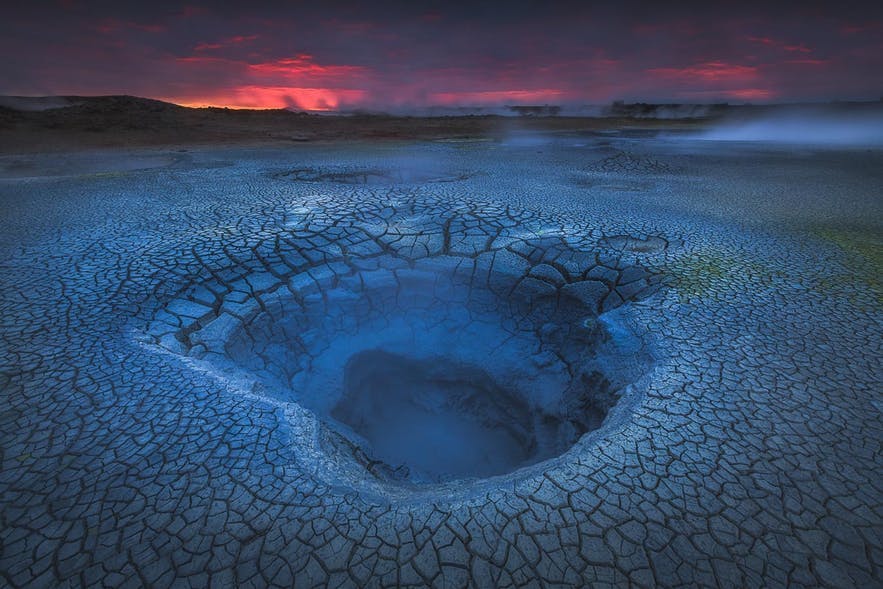 Getting up close and personal with the geothermal features of the Highlands. Photo by: 'Alban Henderyckx'.
Getting up close and personal with the geothermal features of the Highlands. Photo by: 'Alban Henderyckx'.
HDR Photography in Iceland | Exposure Blending for Beginners
High Dynamic Range photography is a useful photography technique to use. For all types but especially for landscape photography. It aims to equalise the lightest and darkest areas of any given scene. By bringing them closer together, you can balance the whites and blacks of your image.
When you look at a landscape photography scene, the exposure tends to balance out. Overly dark or light areas are distracting and pulls the attention from the viewers. This might mean that those perusing your work miss the most important elements in your scene. This is due to unbalanced light.
The idea is that you capture an uneven series of images of the same exact scene. Either three, five, seven or more images are captured from the same place, the only difference being that each shot has a slightly different exposure.
Some photographers go for an increase and decrease of the exposure value at a value of three. You can opt for one or two, as long as it is consistent. When these images are layered and stitched together, they give more detail and exposure to play with.
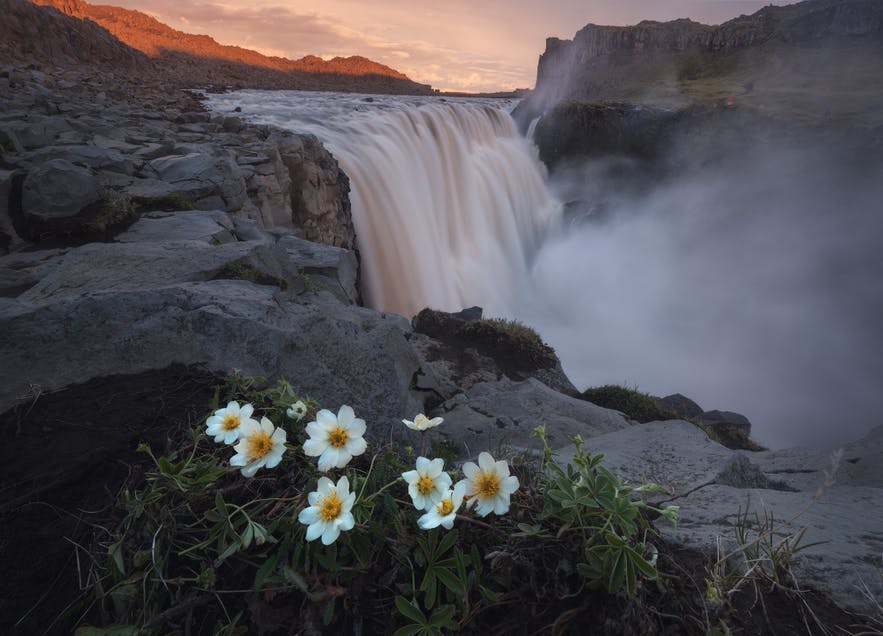 Exposure blending allows you to combine two images of different shutter speeds. Photo by: 'Iurie Belegurschi'.
Exposure blending allows you to combine two images of different shutter speeds. Photo by: 'Iurie Belegurschi'.
A Practical Guide to Golden Hour Photography in Iceland
‘Golden hour’ photography is a perfect way to light up your subject in a golden, warm hue. It's a form of natural light that appears twice a day, and works for portraits and landscapes a like.
The ‘Golden hour’ comes just after sunrise, or just before sunset. Depending on where you are in the world, it can last from 30 minutes to a few hours. Iceland is special in that it has some of the longest ‘golden hours’ in the world.
We look for a natural, warm light to enter our scene to evoke emotion. Warmer golden colours makes us feel warm, radiating a feeling of positivity and glory.
For all other help in using golden hour photography in Iceland, read our article here.
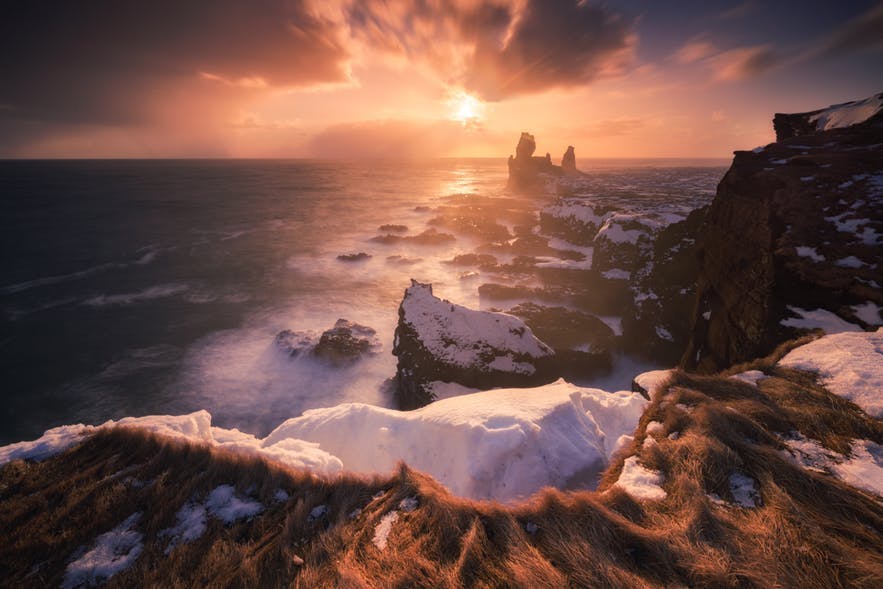 Wide angle lenses are perfect for landscape photography. Photo by: 'Albert Dros'.
Wide angle lenses are perfect for landscape photography. Photo by: 'Albert Dros'.
Capturing Landscapes
10 Essential Tips for Landscape Photography in Iceland
Landscape photography is a large genre of photography which encompasses other photography genres. Fields, hills, mountain ranges and coastal scenes. These are just a few of the possible landscape photography images you can take.
Every different place is a different shot, so no two forests look the same. In many aspects, Iceland also has no parallel. Sure, Canada and some parts of Russia are also cold and offer scenes of the Aurora but Iceland is a special place that needs specialised tips and tricks.
The number one essential tip when you photograph in Iceland is research. Without it, you might spend most of your precious time trying to make up your mind what to do. Research gives you no guarantee of making up your mind, of course. But it might limit what you can and can’t do depending on the season.
With research you can see the length of daylight, and even which way the sun falls on that magical waterfall. You can get a feeling of what sort of images you can expect once you're there. A little research goes a long way; a lot of research means you’ll get there.
 Know how your gear works so you can fix it in a jiffy when in-field. Photo by: 'Iurie Belegurschi'.
Know how your gear works so you can fix it in a jiffy when in-field. Photo by: 'Iurie Belegurschi'.
The Ultimate Guide to Photographing the Aurora in Iceland
Yes. The Aurora. That one magical and mystical phenomenon. It is something almost everyone would want to photograph and experience (in that order). Everyone knows that Iceland is where you can see the dancing night time lights. But what else do you need to know?
Immediately, you need to understand you are dealing with a night time shoot. A tripod is a necessity, to ensure a blur-free image. Likewise, knowing how your camera works will allow you to use techniques such as long exposures.
We have every little piece of information you may need for capturing the Aurora in Iceland.
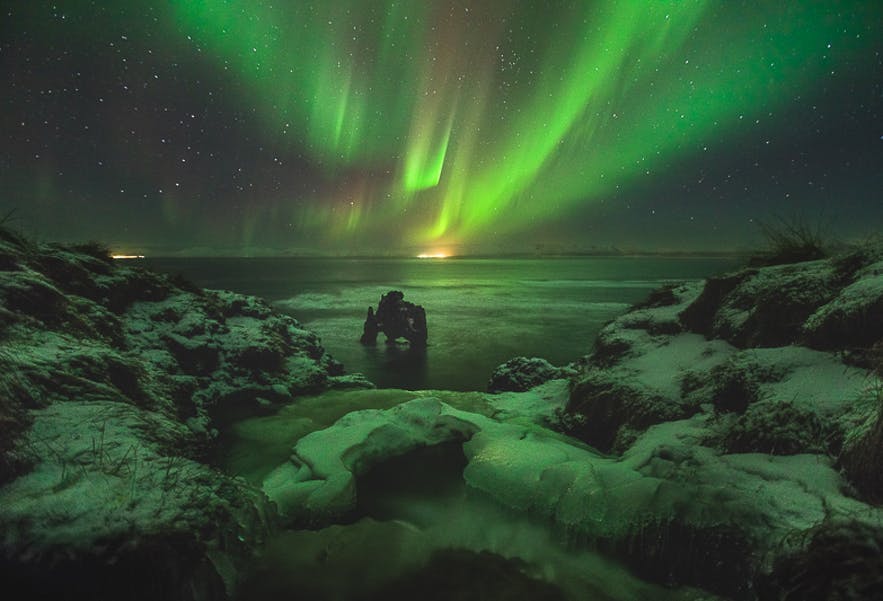 You need dark skies and little light pollution to see the Northern Lights. Photo by: 'Iceland Photo Tours'.
You need dark skies and little light pollution to see the Northern Lights. Photo by: 'Iceland Photo Tours'.
How to Photograph the Waterfalls of Iceland
Waterfalls are one of the main attractions when visiting and photographing Iceland. Seljalandsfoss, Skógafoss and Gullfoss are just three of the countless waterfalls you can find across the island.
Knowing how to photograph them will ensure a successful shoot. The same goes for making sure you have all the necessary equipment. This means you will be ready for any eventuality. Research well and be ready, otherwise you could return empty handed.
In our article here, we go through which cameras and lenses we recommend in capturing these beauties of nature. You’ll also find useful techniques you can implement to add an extra ‘shazam’ to your shoots.
The most important thing you need to consider is how to keep your lenses dry in such a moisture rich environment. We have it all, collected in one place.
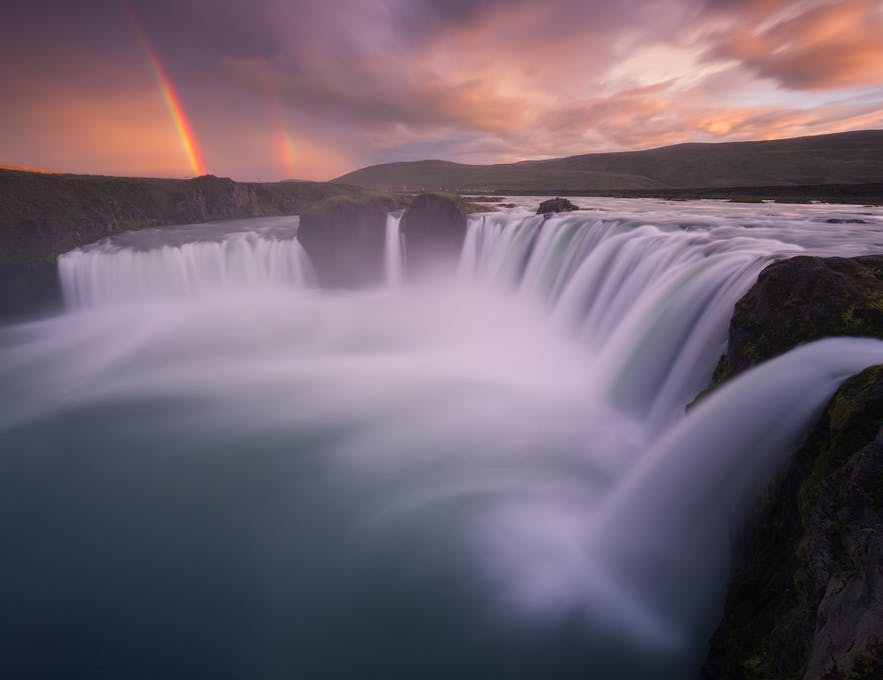 Use ND filters during summer to block out stops of light for longer exposures. Photo by: 'Iurie Belegurschi'.
Use ND filters during summer to block out stops of light for longer exposures. Photo by: 'Iurie Belegurschi'.
A Survival Guide for Photographing at the Coast in Iceland
Iceland is an island, and a rather big one at that. It goes without saying that a lot of photogenic locations are along the coast. The problem is that these areas can cause serious problems for visitors and photographers.
Swells from the sea as well as uncommon and inconsistent waves can rob you of your equipment. Even worse, they have the possibility to drag you into the undertow. As many locations are icy, it creates an easy way to slip and fall.
Firstly, don’t ignore the signs you see dotted around. They will provide you with basic knowledge of the area you are in. Locations around the coast will be unusual for you, so make sure you follow them.
As our base lies in Iceland, we have the best information on how you can keep safe. The best way to ensure safe travels and shoots is to join an Iceland photography tour or workshop.
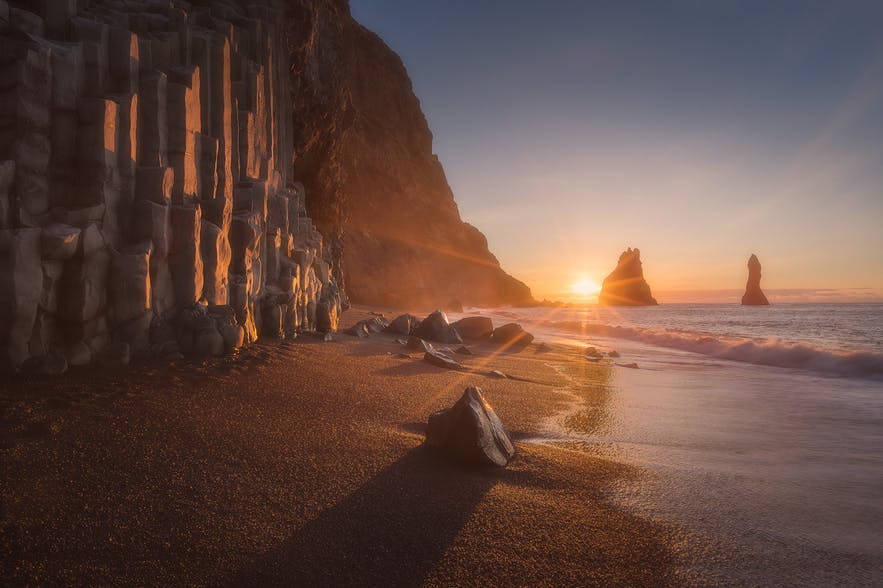 It might seem calm but the sneaker waves at Reynisfjara black sand beach can rise high. Photo by: 'Iurie Belegurschi'.
It might seem calm but the sneaker waves at Reynisfjara black sand beach can rise high. Photo by: 'Iurie Belegurschi'.
Photographing Waves in Iceland | In Field to Post Processing
Someone once said "Just take your time - wave comes. Let the other guys go, catch another one." It says a lot about photographing swells. Waves come and go, allowing you to capture just the right moment.
Wave photography isn’t just about the sea. It can be but you’ll want to incorporate them into a fuller and wider landscape scene.
The beach is what makes photographing waves in Iceland special. The sand can be black from volcanic ash. Also, you’ll find large pieces of ice strewn around. These add exciting and location specific elements into your scene, making it more interesting.
If the sea is your thing, then make sure you read our comprehensive in-field guide here.
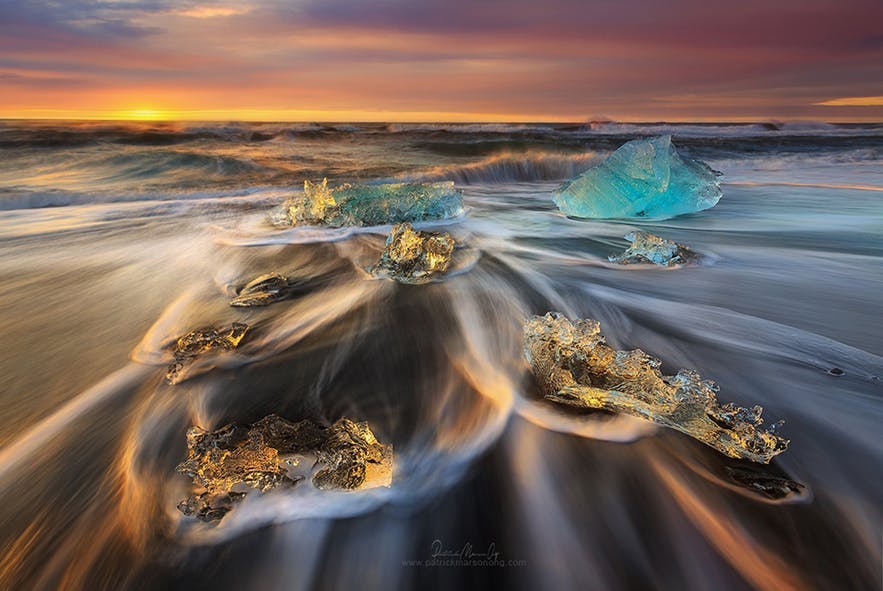 Look at how the waves behave before you get out there in the midst of it. Photo by: 'Patrick Marson Ong'.
Look at how the waves behave before you get out there in the midst of it. Photo by: 'Patrick Marson Ong'.
How to Photograph Rainbows in Iceland
There is almost nothing more magical than rainbows. Unless you have access to the Northern Lights, which trumps all. Iceland has hundreds of locations where rainbows can help you capture amazing landscape shots.
Rainbows are the one thing that you can add to any of these locations. They allow you to take those waterfalls, coastal scenes and mountainous regions and add an extra element. It helps make your images much more powerful.
The one problem you’ll find is that you have no control over rainbows. This makes it extra difficult adding them into your scenes. Where and when can you find them?
For all those who can’t control meteorological events, we have all the information you could need. Give it a go and give those landscape scenes an extra something.
 Rainbow at Skógafoss. Photo by: 'Iceland Photo Tours'.
Rainbow at Skógafoss. Photo by: 'Iceland Photo Tours'.
Locations
Top 5 Geothermal Areas in Iceland for Photography
When most of us imagine Iceland, we picture an ice and snow covered island. Unless we dig deeper into what this beautiful place has to offer. We might miss that Iceland isn’t just a song of ice, but also fire.
Due to its location, Iceland has heat mixed in with the cold. Volcanoes and geothermal areas are also part of the Icelandic landscape. Geothermal relates to natural heat that comes from the earth. Hot springs and geysers are common, making very unique elements to any landscape scene.
Surely you’re looking at including these elements in your Iceland photography. If so, then we have the top 5 geothermal locations on this magnificent island.
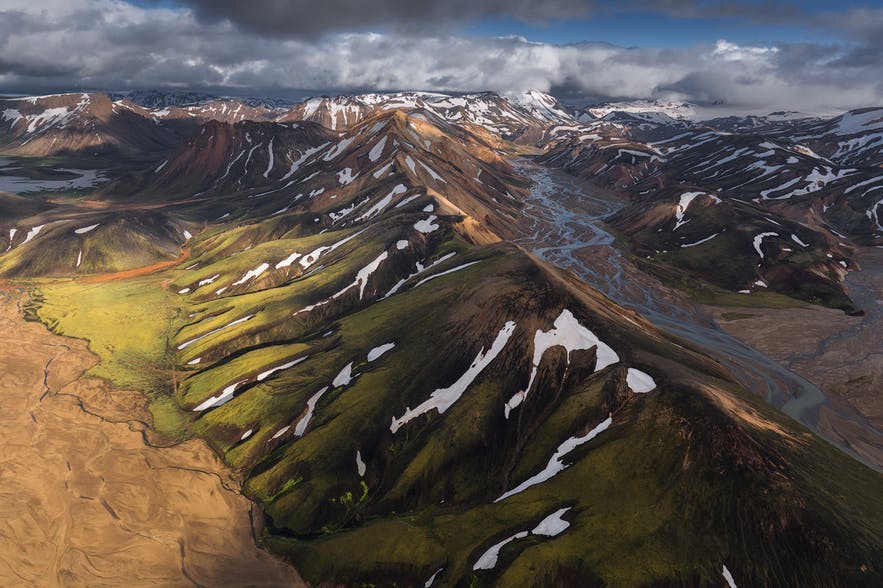 Landmannalaugar is a steaming geothermal site in the Icelandic Highlands. Photo by: 'Iurie Belegurschi'.
Landmannalaugar is a steaming geothermal site in the Icelandic Highlands. Photo by: 'Iurie Belegurschi'.
9 Best Places for Landscape Photography in Iceland
Photographers come far and wide to experience and take in the Icelandic landscape. But unless you are expecting to stay for an extended period of time, how can you possibly make the best use of your time?
Iceland is an island with countless waterfalls. There are over 4,970 kms of coastline, 130 volcanoes and more winter wildlife you can shake your tripod at. This is without mentioning everything else.
The geothermal locations, the magnificent flora and all the mountainous regions that make you go ‘ahhh’. Then when you place them in your Iceland pictures, so will everyone else.
Instead of months of research, we have collected the eight best places for landscape photography in Iceland. You didn’t ask us to, but we did it anyway. It can only benefit the little time you have here. Because however long you plan to stay, it isn’t enough.
 The Strokkur geyser at Geysir on the Golden Circle. Photo by: 'Iurie Belegurschi'.
The Strokkur geyser at Geysir on the Golden Circle. Photo by: 'Iurie Belegurschi'.
7 Must See Landscape Photography Locations in the Icelandic Highlands
If you’re coming to Iceland to capture stunning landscapes, expect scenes that have already been photographed. Even the photographers that follow will see the same waterfalls and coastal areas. This makes it difficult to keep your shots unique.
What we recommend is photographing parts of Iceland that are less explored. Coming off the beaten path allows for capturing Iceland landscape scenes that few photographers will have. By definition, the unique locations will give more precedence to your images.
The Icelandic Highlands are what you are looking for. You'll find them deep in the interior of the island, where the remoteness gives you an advantage. They are only accessible during the summer months, so plan ahead. Start by reading our post on the seven must see landscape locations in the Highlands here.
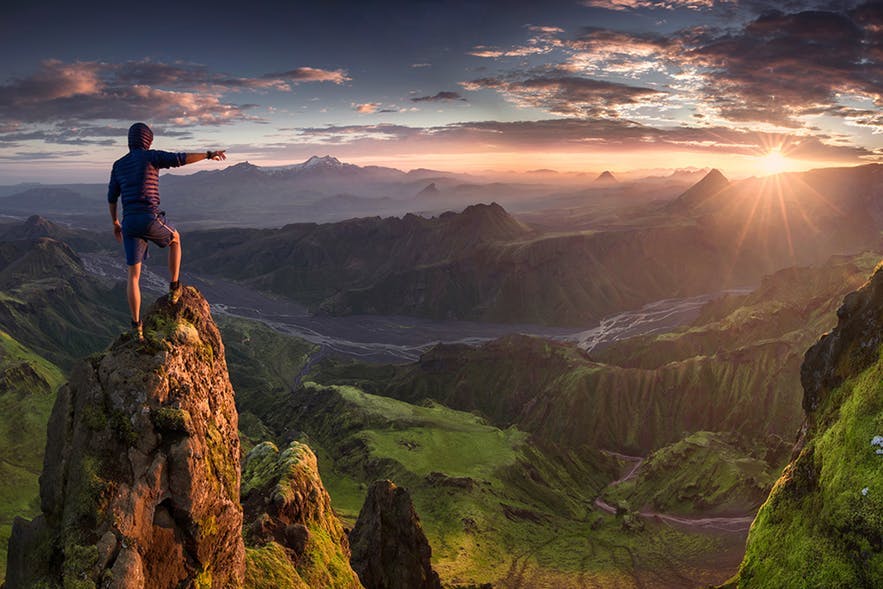 The Valley of Thor. Photo by: 'Max Rive'.
The Valley of Thor. Photo by: 'Max Rive'.
The Best Waterfalls for Photography in Iceland
Did I mention how many waterfalls there are in Iceland? Last time someone counted, there were over 10,000. How are you going to know which ones are the most accessible? More importantly, which are the most photogenic?
Not all waterfalls are able to be photographed. As you will probably have limited time, we went ahead and made a list for you. Following our guide, you’ll find over nine of the best waterfalls in our article. They will give you a great advantage to your landscape portfolio.
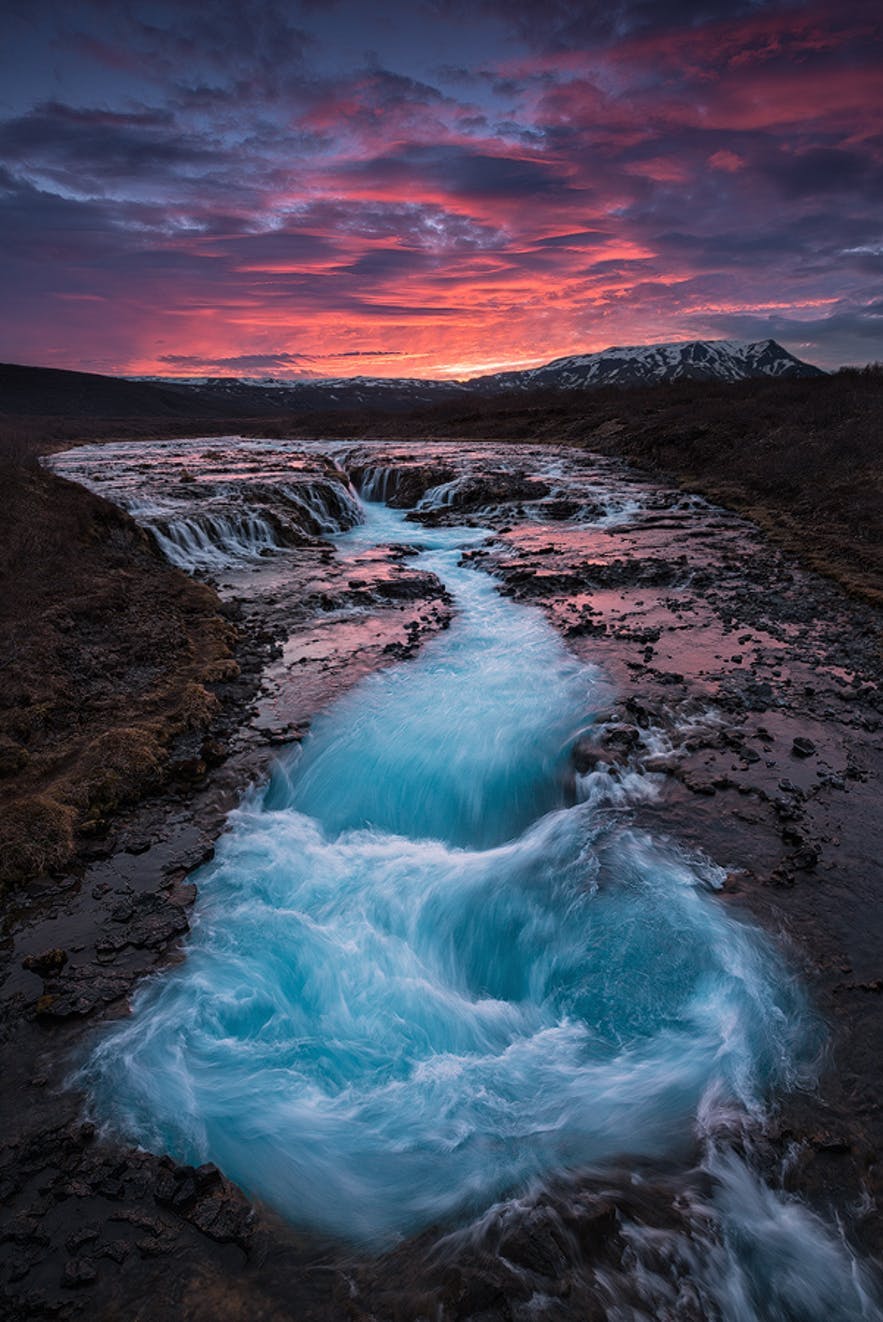 Brúarfoss. Photo by: 'Iurie Belegurschi'.
Brúarfoss. Photo by: 'Iurie Belegurschi'.
All You Need to Know About Photography at Hvitserkur in Iceland
Coming to Iceland to capture amazing landscape photography might interest you. If so, you’ll know that research is paramount. You don’t want to arrive here and wing it. This might mean you miss the things that appealed to you in the first place.
Most photographers come to capture Iceland’s landscape scenes with a picture etched into their mind. The chances are high that it is Hvítserkur that pulled you to this Nordic part of the world.
What you’ll find here in the Vatnsnes peninsula is a huge, white rock column that rises from the sea. This jaw-dropping rock has a legend behind it. This just makes it an even more impressive element for inspirational landscape shots.
Not only will we tell you where it is, but how to photograph this ‘white shirt’. Oh, and we will let you in on the legend behind it too.
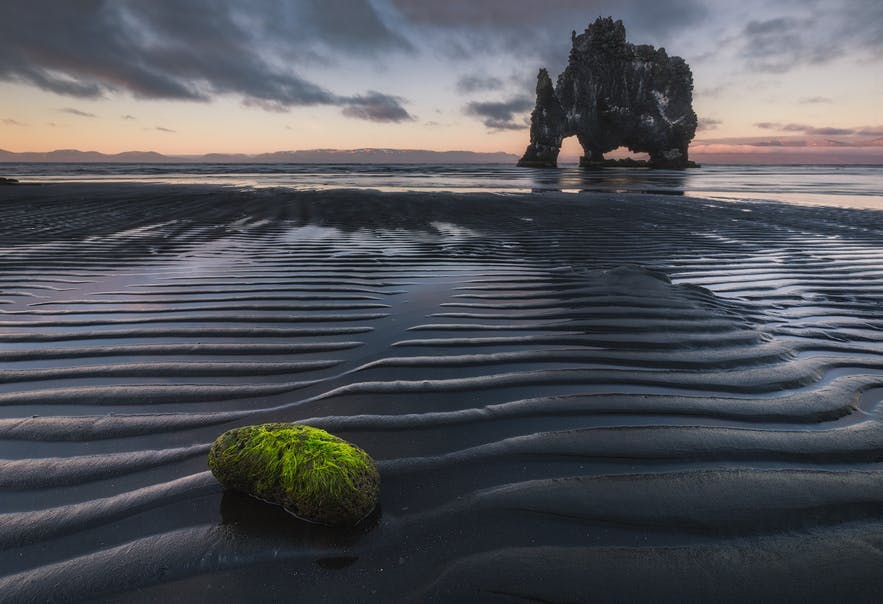 Hvitserkur. Photo by: 'Iurie Belegurschi'.
Hvitserkur. Photo by: 'Iurie Belegurschi'.
The Ultimate Field Guide to Photography at Kirkjufell in Iceland
Iceland's popularity for landscape photograph is growing immensely. Because of the increase of these landscape scenes, Iceland is becoming more recognisable. Nothing is more synonymous with Iceland landscape photography than that of the Kirkjufell mountain.
This special site is easily identifiable, and one of the reasons so many people make the trip to Iceland. Everyone with a camera who comes here captures this magnificent peak.
Sometimes, with the adjacent Kirkjufellsfoss waterfall in the same wide-angle shot. There is a reason this mountain shows up in so many Iceland pictures.
Unless you know Iceland like the back of your hand, it might be difficult to navigate to. You could join an Iceland photography landscape tour, or you could start with our article. Now only can we help you find it, but also when to photograph it and how.
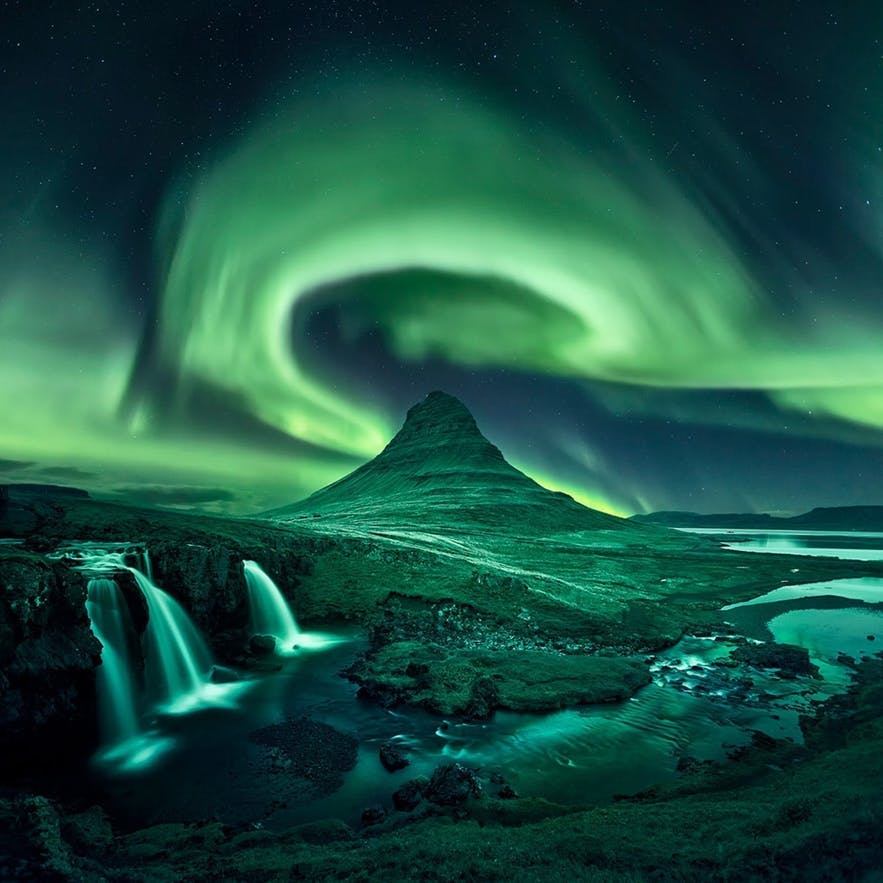 Kirkjufell beneath the Northern Lights. Photo by: 'Mads Peter Iversen'.
Kirkjufell beneath the Northern Lights. Photo by: 'Mads Peter Iversen'.
Everything you Need to Know About Photography at Vestrahorn
Those who experienced Iceland landscape photography, would agree that Vestrahorn is a highlight. To all the newcomers, Vestrahorn is a small mountain range on the east side of the Island. It reaches 434 meters into the sky, surrounded by black volcanic sand.
It is one of the most popular Iceland landscape photography sites. You see that there are many different ways to capture it. The possibilities will change due to the season you arrive in.
One of our most favourite ways is using the still waters at its base as a reflective mirror. This really shows off the snow-topped mountain at its best.
We have collected everything you need to know about photographing Vestrahorn. Make sure you don’t miss out on something that could really benefit your photography.
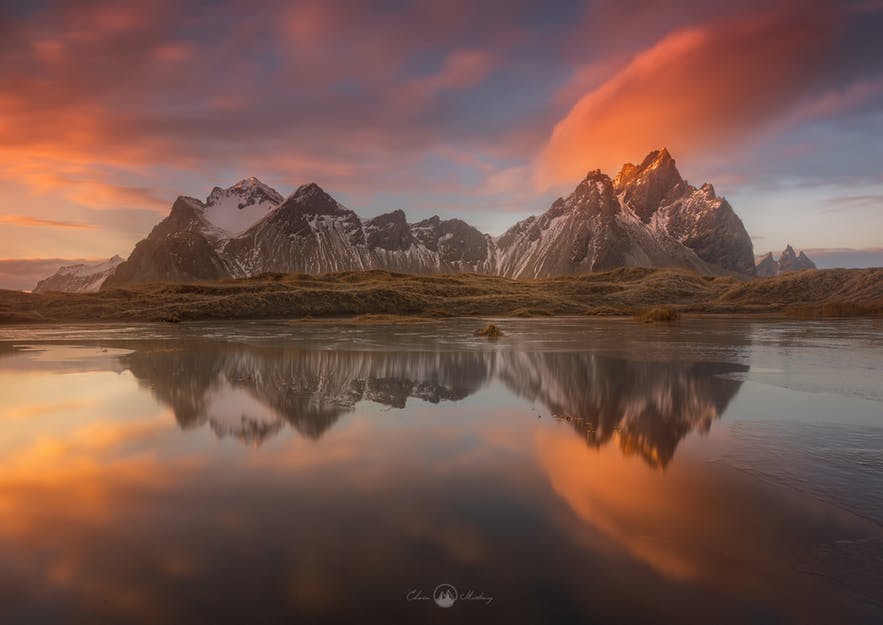 Reflections of Vestrahorn. Photo by: 'Edwin Martinez'.
Reflections of Vestrahorn. Photo by: 'Edwin Martinez'.
Tips and Tricks for Photographing The Sun Voyager in Reykjavik
The 'Sólfarið' or Sun Voyager is a sculpture found in the Icelandic capital, Reykjavík. This is a beautiful tribute to the sun, formed by one of Iceland’s own artists, Jón Gunnar Árnason.
From visiting it yourself, you’ll notice that its shape and form represents a boat. Not only does it resemble the bare bones of a hull of a ship, it also stands next to the harbour.
Those who see it as a Viking ship won’t be surprised at what it represents. Freedom and progress is the theme, following a feeling of the Nordic people.
If you find yourself in the area, this is a must-see. It’s classic elegance stands and shines brightly throughout the day. There are many ways to capture this beautiful sculpture. How do you find out? You start with our article here. It has all the tips and tricks you’ll need.
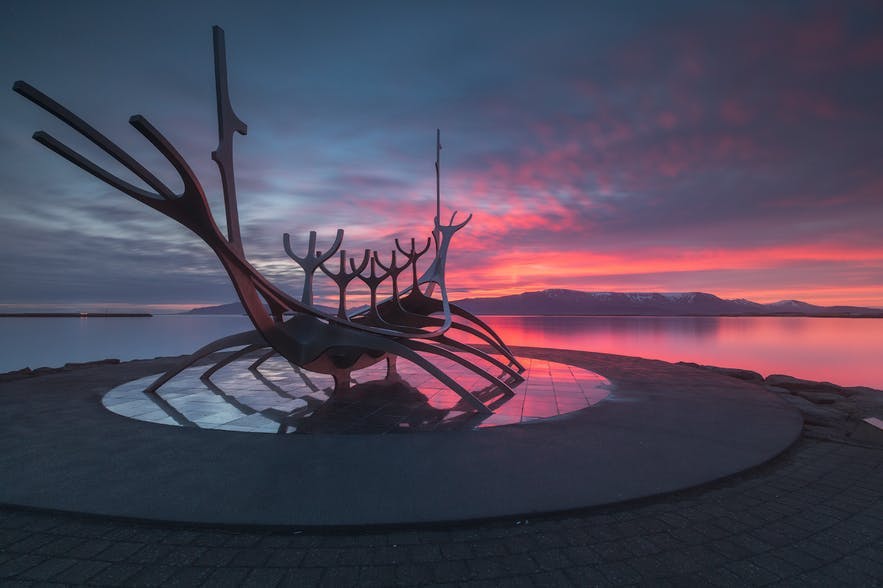 The Sun Voyager. Photo by: 'Iurie Belegurschi'.
The Sun Voyager. Photo by: 'Iurie Belegurschi'.
How to Photograph the Diamond Beach in Iceland
The Diamond Beach is just one area of the 4,790 km coastline you can find in Iceland. The name actually derives from the blocks of ice that wash up on the beach. As the ice washes up on the black sand, they resemble diamonds in the rough. Not a bad way to start a photography journey, huh?
You might have seen the photographs strewn across the Internet already. It might be one of the principle reasons you are deciding you make your way over to this part of the world. As it doesn’t happen in many places in the world, it is a treasure to visit it here.
Knowing how to photograph this beach is a godsend. Especially since the tips come from those who live on the island and photograph the area often. You get special information, tips and tricks by the photographing locals. What else could you ask for?
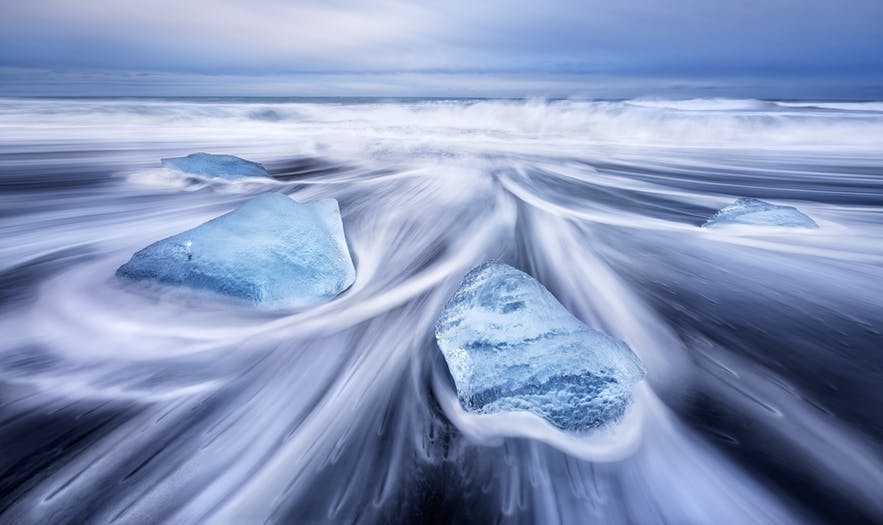 Wide angle lenses let you get up close enough to exaggerate the action. Photo by: 'Iurie Belegurschi'.
Wide angle lenses let you get up close enough to exaggerate the action. Photo by: 'Iurie Belegurschi'.
Complete Guide to Photography at Reynisfjara Black Sand Beach
There are a few black sand beaches in Iceland and it’s all thanks to the few volcanoes that you can find there. I say few but there are actually 130 active ones on the island. They are magical and special compared to the common white sandy beaches you find on any other coast.
The black sand at Reynisfjara sets itself apart. It helps to create a beautiful contrast to the surrounding landscape. Try a sunrise or sunset shot of the beach and the waves. It will knock people out of the park. Or instead, what about a long exposure? These will impress others easily.
We have the complete guide here on how to find and capture the Reynisfjara black sand beach. You won’t be disappointed. You will walk away with an awe-inspiring Iceland landscape scene.
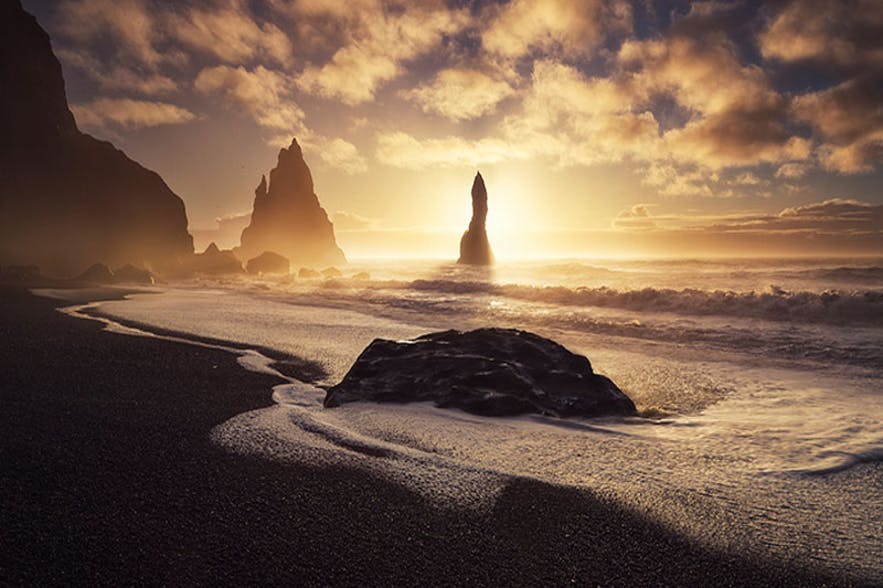 Reynisfjara black sand beach is one of the top locations for landscape photography in Iceland. Photo by: 'Iceland Photo Tours'.
Reynisfjara black sand beach is one of the top locations for landscape photography in Iceland. Photo by: 'Iceland Photo Tours'.
Complete Travel Photography Guide to Seljalandsfoss Waterfall
Sometimes, the most famous pulls in the attention of many photographers. Think of the antelope canyon in USA or the archaeological city of Petra in Jordan. These are famous sites for photographers for a reason. They are simply amazing.
Iceland has a lot of sites, locations and natural elements that make it a great place to shoot. But, there are the really famous ones, such as Seljalandsfoss. It means that you’ll need a little help in capturing this waterfall. Especially without following in the footsteps of thousands of other photographers.
Luckily for you, we have it. It's right here and ready to go, along with all the travel tips you might need. We get you there and offer you recommendations on how to shoot it too. Neat.
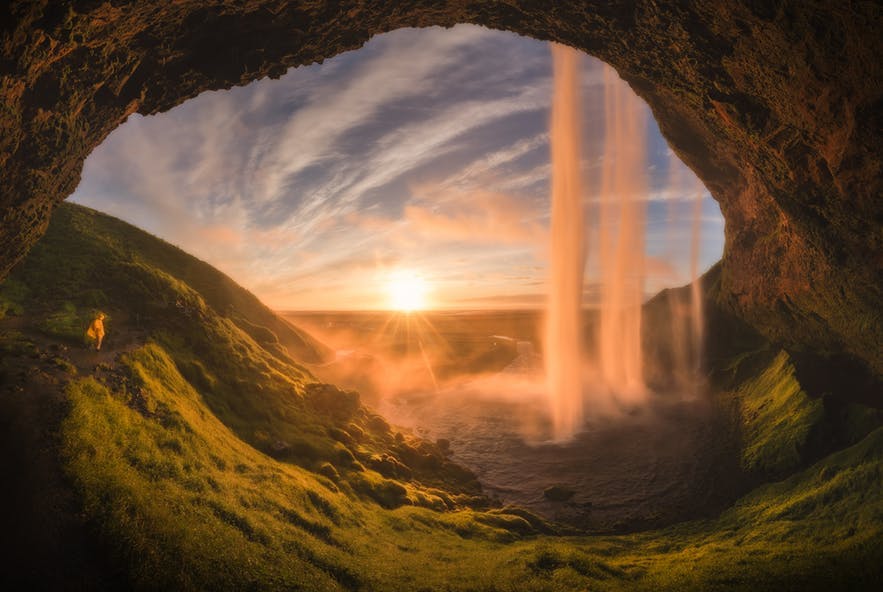 Summer is the perfect time to capture sunstars from behind Seljalandsfoss. Photo by: 'Kaspars Dzenis'.
Summer is the perfect time to capture sunstars from behind Seljalandsfoss. Photo by: 'Kaspars Dzenis'.
Complete Guide to Photography at Hraunfossar Waterfall in Iceland
‘Lava Falls’ – or Hraunfossar as it's more commonly known – is another great waterfall in the Icelandic region. It is a slightly different waterfall than many will be used to. This will capture the attention of many landscape photographers who search for something different.
Instead of one straight waterfall, it isn’t so plain or simple. Here you’ll see a series of water falling from a stretch almost 1km in length. The water only falls 12 meters, so it's much wider than it is tall.
If you are looking for something strange yet beautiful, this is it. It's over a 1000 years old, so the history behind it certainly lives up to the view you get. Perfect for a special Iceland landscape scene.
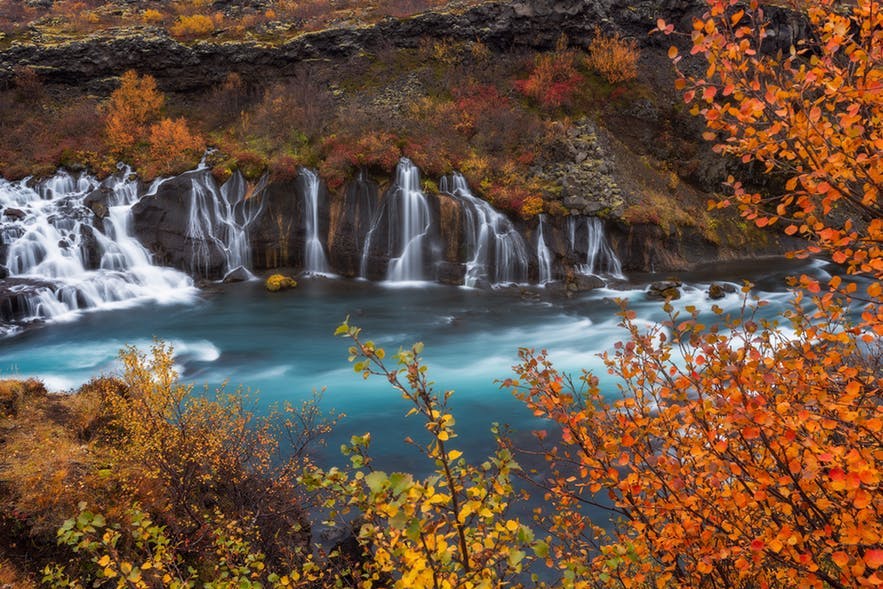 It can be difficult to compose a shot at Hraunfossar. Photo by: 'Iurie Belegurschi'.
It can be difficult to compose a shot at Hraunfossar. Photo by: 'Iurie Belegurschi'.
Key Tips for Photography at Jokulsarlon Glacier Lagoon
In today’s climate, glaciers are increasingly more and more important. I believe that for the human race to help protect geological elements, we need to see and experience them first hand. If we can see how important and impressive they are, we are more likely to change our habits.
For photographers, glacial lagoons like the 18 km2 Jökulsárlón lake is a magical delight for the eyes. At the bottom of the glacier is where you’ll find this 200 m deep lake. Inside of which are icebergs of all shapes and sizes, all waiting to be photographed.
We have all the tips you need to capture this magical place. We guarantee it is like nothing you’ve ever seen before. Just make sure your batteries are charged and we'll help you take some of the best Iceland pictures possible.
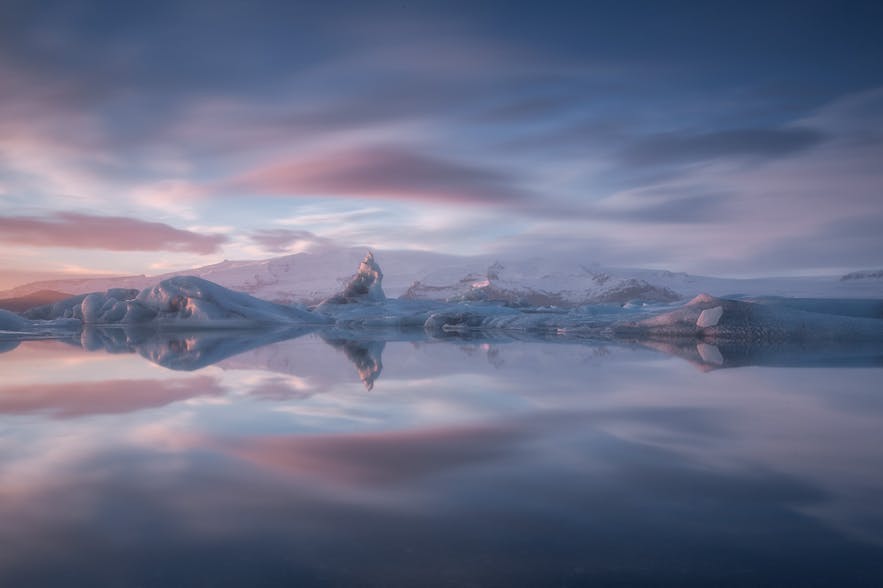 Pink milkshake. Photo by: 'Iurie Belegurschi'.
Pink milkshake. Photo by: 'Iurie Belegurschi'.
The Ultimate Guide to Photographing Ice Caves in Iceland
There are a handful of places on the planet that host an ice cave. I'm not talking about the touristy bars on the sides of common tourist streets in European cities. We mean the areas inside glaciers that form due to melting ice.
Glaciers, as you’ll remember from high-school, are huge blocks of ice that constantly move. As they do, they carve into the landscape around it. As the ice melts, the caves and tunnels also change, making them a wonder to photograph.
The benefit is that these areas are always different. Returning again and again will provide you with very different landscape scenes.
 Exploring an Ice Cave. Photo by: 'Iurie Belegurschi'.
Exploring an Ice Cave. Photo by: 'Iurie Belegurschi'.
Travel Photography Guide to the Westfjords of Iceland
Iceland sports some of the most wonderful landscape scenes you could possibly imagine. Alongside them are wildlife that you can’t find anywhere else in this part of the world. To find both together, you really need to make your way to Iceland’s Westfjords.
The North-Western point of the island has untouched landscapes. They sit there just waiting for you and your camera. Expect islands and mountains, as well as enough scenery to keep you snapping away for a hot minute.
In our article we will look at the location, the likely weather patterns and what you can capture. It's the best way to start a landscape photography tour on the right foot.
 Double rainbows in the Westfjords. Photo by: 'Iceland Photo Tours'.
Double rainbows in the Westfjords. Photo by: 'Iceland Photo Tours'.
Capturing Wildlife
Wildlife Photography Guide | How to Shoot Great Pictures of Animals in Iceland
Iceland offers some of the most amazing nature scenes to suit all landscape genres. There are a few things you can add into these shots, wildlife being one of the most important.
Wildlife in a landscape scene not only helps to cement a location. It also gives a great sense of scale and helps in strengthening the composition of any natural frame.
On the island you’ll find a few common animals, such as horses and sheep. However, they come with an Icelandic twist, allowing them to survive the harsh climate.
There are less common animals too, but we will leave it for you to discover yourself. Everything is within our article below.
It's a perfect place to start in your Icelandic wildlife shoot. Not many can say they have such an interesting horse as you do in your Iceland pictures.
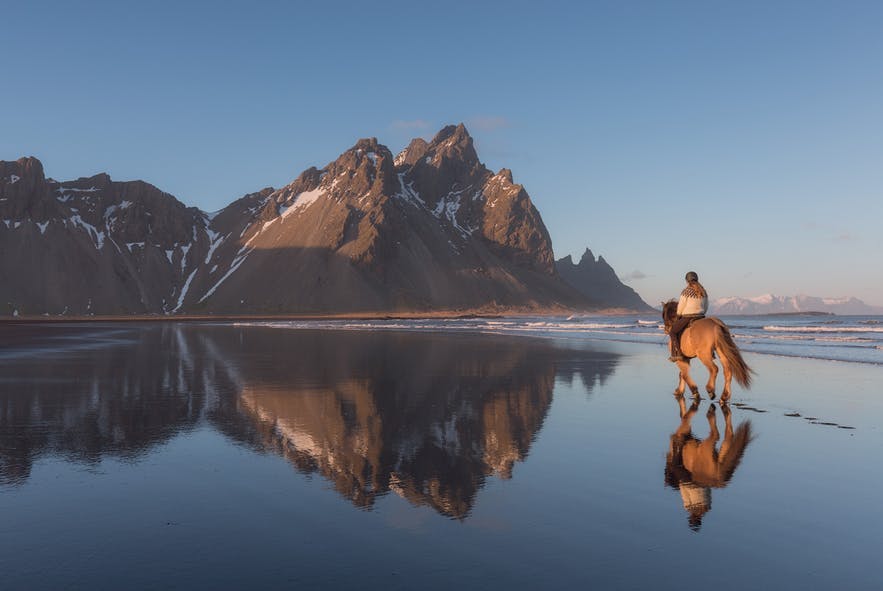 Try to find an interesting backdrop when photographing animals in Iceland. Photo by: 'Iurie Belegurschi'.
Try to find an interesting backdrop when photographing animals in Iceland. Photo by: 'Iurie Belegurschi'.
Complete Guide to Photographing Puffins in Iceland
There are some animals that are synonymous with the rocky environments of Iceland. Puffins are just one of the creatures that fare well here and call this place their home.
These quirky divers are a sight to behold! During the mating season, their beaks become colourful. They do need to entice the opposite sex, after all.
As they populate the coastal areas, it can be difficult to reach them in their home territory. Thankfully, we are here with the help you need. We look at where you can find them, the best time to do so and how best to capture them. You won't be sorry.
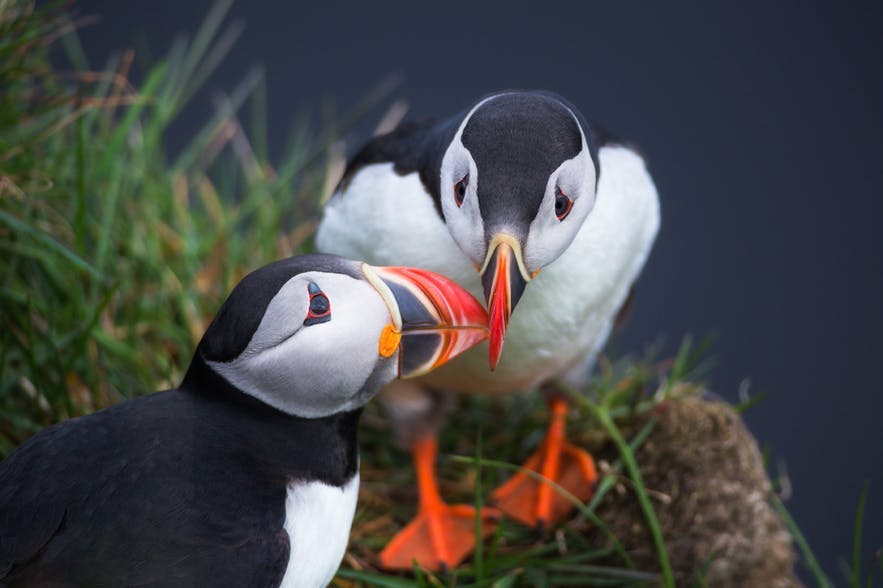 Puffins sometimes move quickly, particularly when they're together! Photo by: 'Iurie Belegurschi'.
Puffins sometimes move quickly, particularly when they're together! Photo by: 'Iurie Belegurschi'.
The Best Places to Photograph Puffins in Iceland
Iceland is full of beautiful sites for some of the world’s best landscape photographs. But there is a lot more to this location than meets the landscape photographer's eye.
For one, there are very unique wildlife that populate areas of this of this all-inclusive island. Puffins are only one of the faunal elements of Iceland that you can expect. In fact, you can find up to 10 million puffins here, making it one of the world’s biggest colonies on earth.
We have all the information on these birds. Where to find them, how to photograph them and, most importantly, in which language you need to address them in.
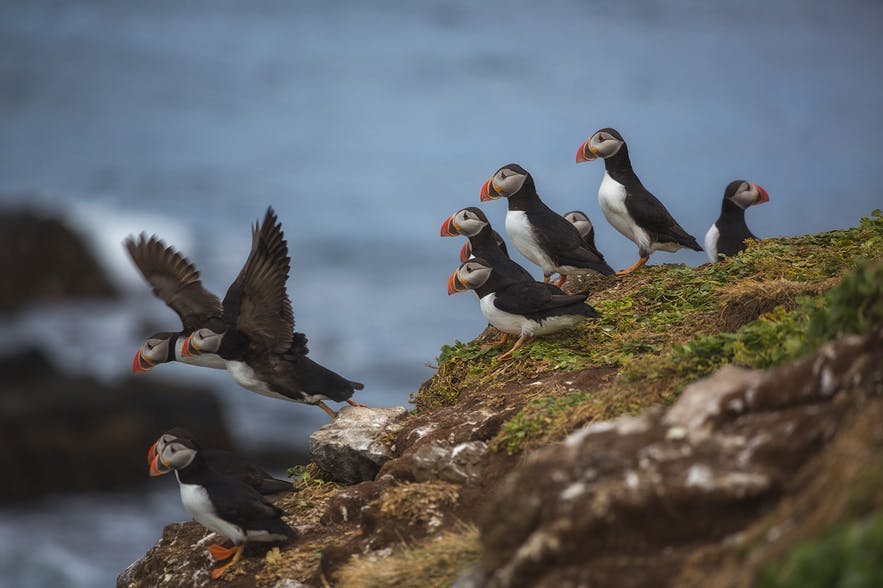 Puffins Take Flight. Photo by: 'Iurie Belegurschi'.
Puffins Take Flight. Photo by: 'Iurie Belegurschi'.
The Essential Guide to Photographing the Icelandic Horse
There are many different horse types throughout the world. Few have the history of the Icelandic horse. First appearing in the 10th century, this breed has a longstanding history on the island.
They are also a large part of Norse mythology. Arvak and Alsvid were two horses who pulled the sun goddess on a chariot. At least seven other horses make it into the Eddas, as they were the steeds of the gods.
These horses are very special, and their ancestral breed is very much extinct. Add them to your landscape photography for an added extra. Start by looking through our essential guide here.
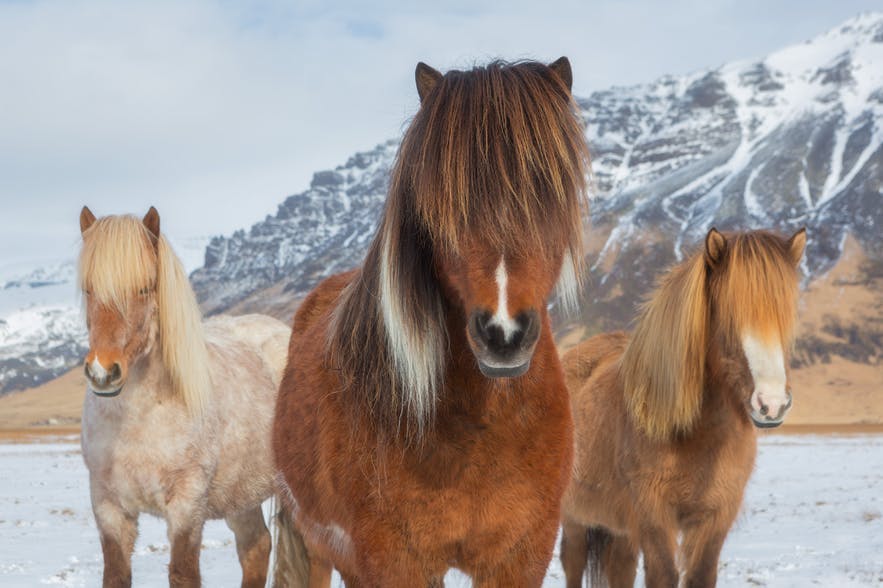 There's a New Boy Band in Town. Photo by: 'Iurie Belegurschi'.
There's a New Boy Band in Town. Photo by: 'Iurie Belegurschi'.
Where to Photograph Lupines and Wildflowers in Iceland
You might envision that Iceland is one cold place, covered in snow and ice all year round. Even though they do have a pretty harsh winter, there is also a summer that follows. Ok, it might not be sunbathing weather, but the ice does melt.
As the blanket of white lifts away, it reveals all the hidden gems below. Green pastures covered with wildflowers and lupines and they go as far as the eye can see.
These colours bloom and burst out once they have the opportunity. Not only are they a fantastic sight to see, but they also provide a beautiful touch to your landscape photography. If you’re looking at where to find them and how to capture them, look no further.
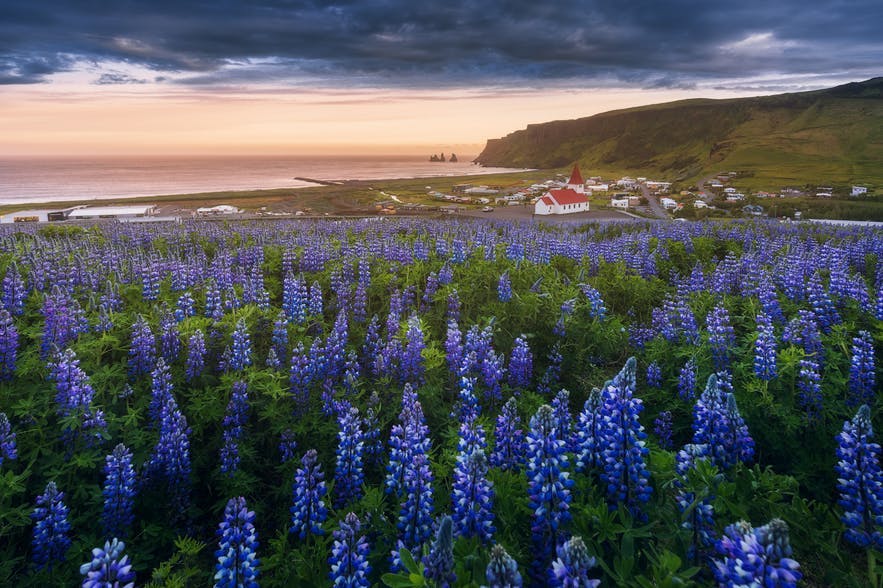 Fields of purple lupines overlooking the church in Vík. Photo by: 'Iurie Belegurschi'.
Fields of purple lupines overlooking the church in Vík. Photo by: 'Iurie Belegurschi'.
Drone & Aerial
Aerial Photography in Iceland | Drones vs Helicopters and Planes
When it comes to landscape photography, straight shooting from eye level isn’t always the best perspective. Every other photographer and tourist comes and shoots the same way. This means hundreds of thousands of natural landscape scenes that all look the same.
Shooting from above, either top-down or at an angle, provides a perspective few of us are privy to. Immediately, they are more interesting. This can be helpful in setting yourself apart, especially with your Iceland pictures.
In our article we look at the difference between three ways to capture from the skies. Drones, Helicopters and Planes all allow you to capture from above, but which one suits you best? Find out here.
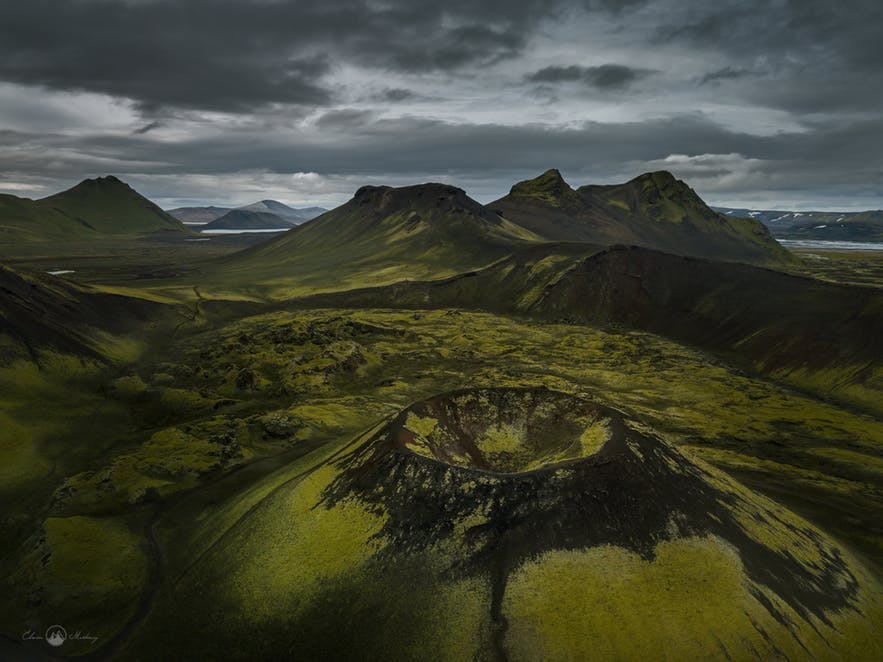 Flying a drone is difficult when it's windy. Photo by: 'Edwin Martinez'.
Flying a drone is difficult when it's windy. Photo by: 'Edwin Martinez'.
5 Reasons Why Iceland is the Best Destination For Aerial Photography
Aerial photography is one area of landscape photography that is still relatively new. All photographers will have a camera, yet few will shoot from above using a drone. Planes and helicopter rides for photography are expensive to say the least.
Iceland is a perfect place for aerial photography for many reasons. On this island you’ll find very diverse environments. From waterfalls to black sand beaches, glaciers and active volcanoes.
The most appealing aspect for Icelandic aerial photography is the light you’ll receive. Whether its harsh direct sun, patches of light from stormy clouds or the northern lights glow. All add their own unique atmosphere to each natural landscape scene.
For the other four reasons on why Iceland is perfect for aerial photography, read our article here.
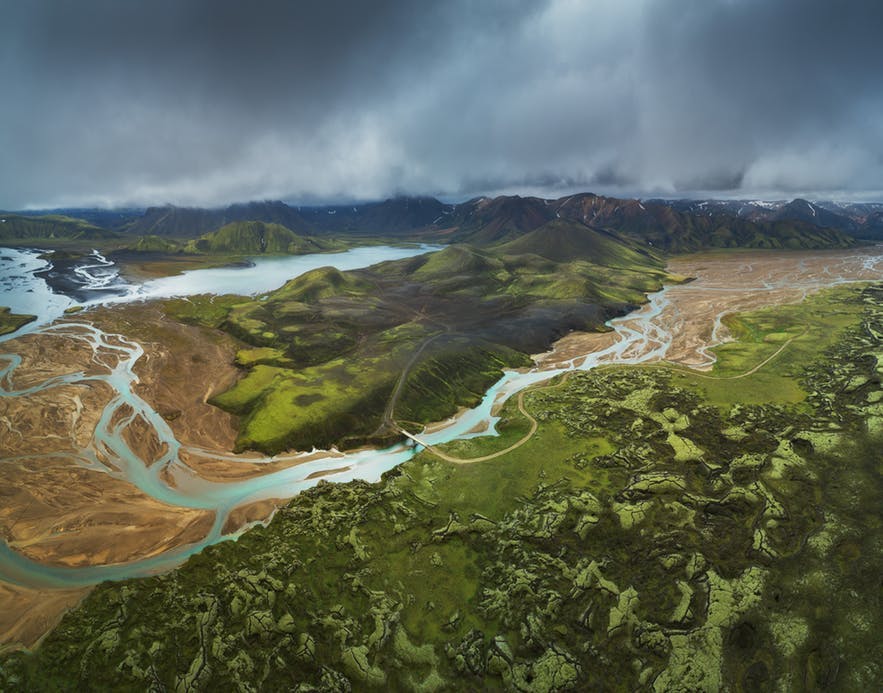 An oasis from above. Photo by: 'Iurie Belegurschi'.
An oasis from above. Photo by: 'Iurie Belegurschi'.
Which Drone Should You Take To Iceland?
Drones are the best, cheapest and fastest way to capture the Icelandic landscapes from an aerial perspective. The problem is, there are so many different drones to choose from. How do you decide between the DJI Mavics, Inspires and Phantoms?
For most photographers, it is the price that needs considering first. You might not need a $2000 drone when a cheaper one will suffice. But, if you plan on selling the Iceland pictures through your photography business, you really want the best quality option.
In our article, we run through some of the latest and greatest choices in drones. All are available in 2020, purchasable online.
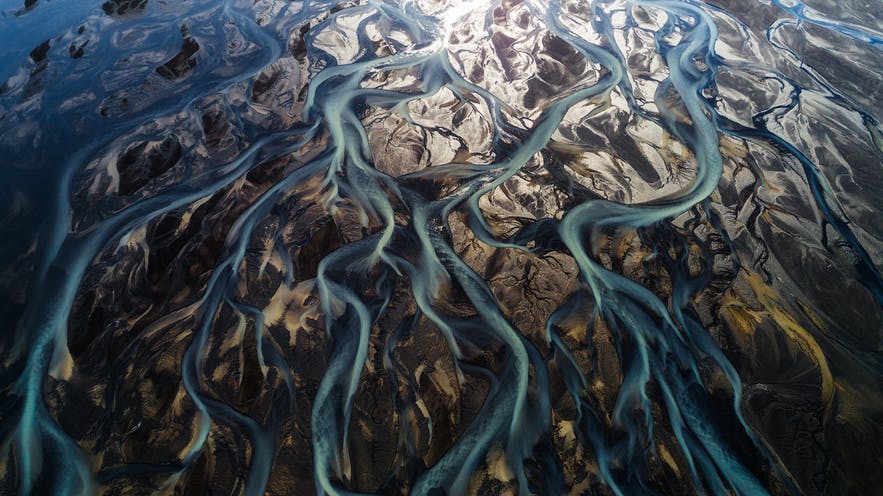 A view of a river delta in Iceland from above. Photo by: 'Iurie Belegurschi'.
A view of a river delta in Iceland from above. Photo by: 'Iurie Belegurschi'.
The Top 10 Spots in Iceland to Fly Your Drone
Iceland is a magical place for all kinds of wildlife and landscape photography. It goes without saying that an aerial perspective is a great choice in showing off some of her greatest locations.
If you’re new to being the eye in the sky, or aren’t familiar with the Icelandic landscape, let us help you. We have collected the top spots in Iceland to fly your drone, and chosen 10 for your perusal.
One of our recommendations is the Snæfellsnes peninsula. There is a whole world to discover, which you can do easily from above. Here, you’ll find too many beautiful locations to single out one, so go and see what takes your fancy.
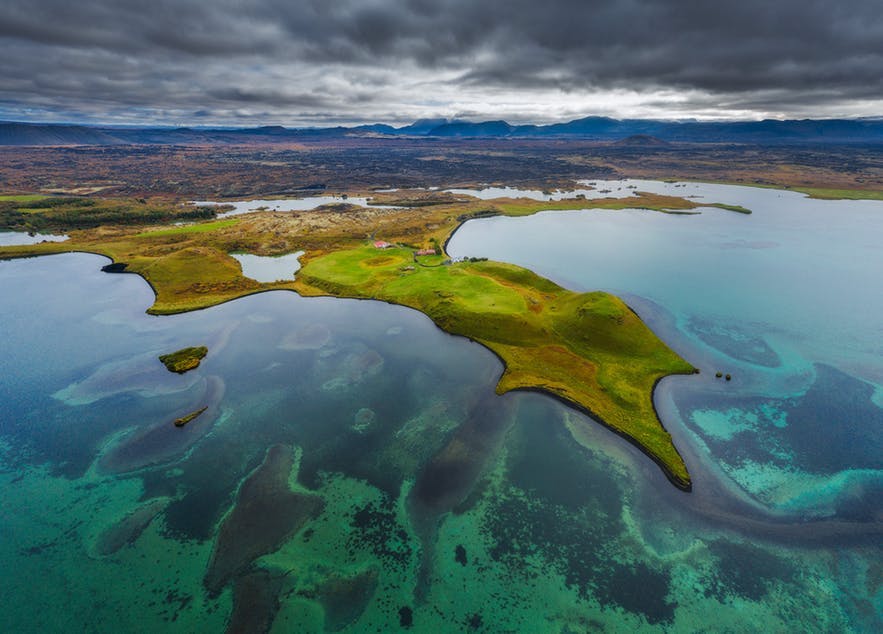 Iceland In Blue. Photo by: 'Iurie Belegurschi'.
Iceland In Blue. Photo by: 'Iurie Belegurschi'.
5 Useful Tips For Flying a Drone in Iceland
You might be a seasoned aerial photographer, or looking forward to your first flight. Either way, if you plan on photographing Iceland from the skies, you’ll need some help.
Luckily, we have five very useful tips for you and your drone photography. They will ensure you and others around you are safe, your drone returns to you easily and you get the shots you need.
The most important thing is to not underestimate the weather. There are two main seasons in Iceland, and both are bitterly cold. It forces you to consider extra battery power. For one, the cold weather reduces your drone’s power efficiency. Stocking up on extras will be a huge help.
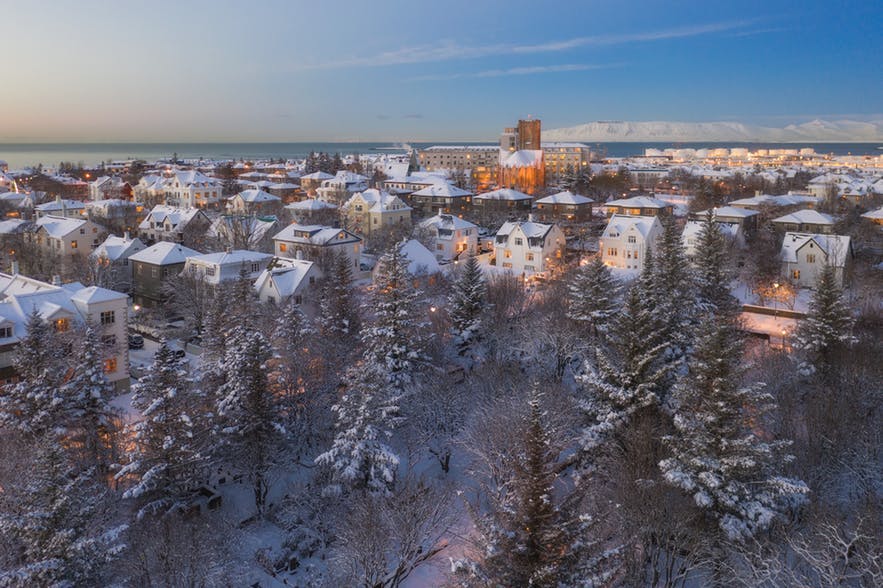 Snow covered Reykjavík city. Photo by: 'Iurie Belegurschi'.
Snow covered Reykjavík city. Photo by: 'Iurie Belegurschi'.
Top Tips For Travelling to Iceland With Your Drone
Your drone is one of the best devices you can take with you to Iceland. Obviously, it allows you to capture landscape photography and wildlife from above. It allows you to capture great shots in remote places and from afar.
In our article here, we look at the top tips for travelling to Iceland with your drone. After all, you don't want to be high and dry when the decisive moment comes along.
For one, and the most important, you need to know your drone inside out. By practising before you go, you’ll be able to yaw, pitch and roll without any trouble.
You’ll get a feel of capturing images and video while you move around. This is the best way to capture stunning Iceland pictures.
Each drone has many options and possibilities in shooting landscape scenes. Go through our list and make sure you have covered all your bases.
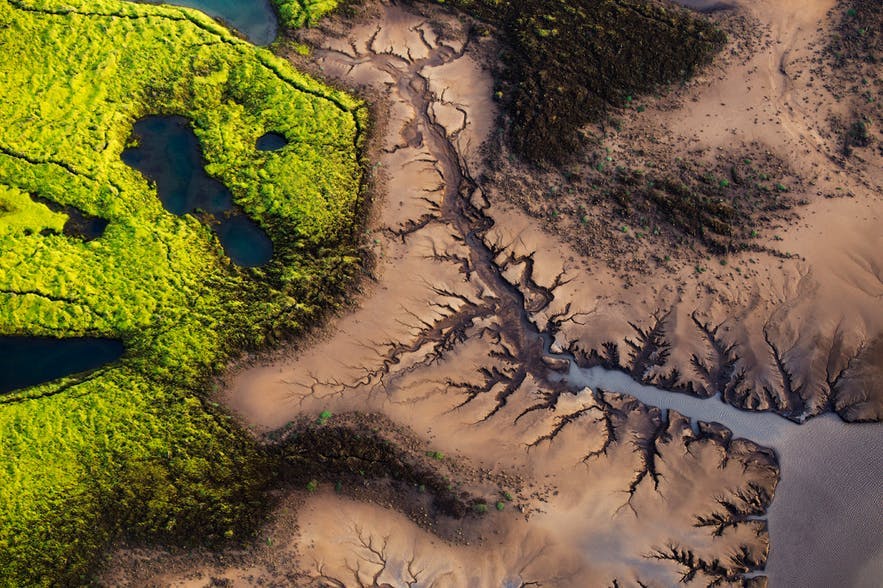 Patterns below. Photo by: 'Iurie Belegurschi'.
Patterns below. Photo by: 'Iurie Belegurschi'.
What Are the Rules For Flying a Drone in Iceland?
Many drone users and drone photographers are a little confused about the rules of flying your aerial eye. Every country and region has its own rules, some of which forbid the use of drones throughout.
When it comes to aerial photography, altitude is the main concern. Iceland pictures are no different. You can’t rise above 120 m (393 ft) without special permission, which isn’t easy to come by.
Most of the other rules follow common sense. However, there are a few that are location specific. Don’t put people, your drone or your finances in jeopardy. Read our article here to get up to speed.
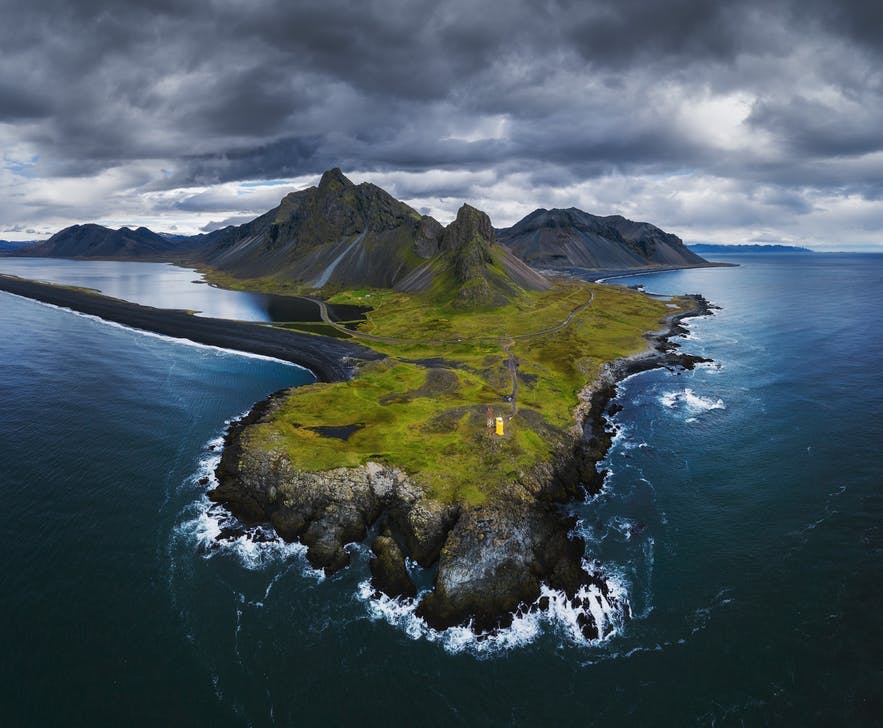 The windswept tip. Photo by: 'Iurie Belegurschi'.
The windswept tip. Photo by: 'Iurie Belegurschi'.
The Best Drone Accessories to Take to Iceland
Drones are great devices for capturing all types of photography, not just landscapes. There will be times where your drone needs a little help, either to reduce the light in the scene or to add more so you can see more of what you’re capturing.
This is especially true if you are trying to work with specific techniques. Long exposures in conditions of very strong natural light can benefit from ND (neutral density) filters.
We recommend adding lights to your drone. This helps you to light locations and subjects from a godly position. It also allows you to add light paths over mountains and rocky formations.
Read here to learn about all the different accessories that can help your aerial photography.
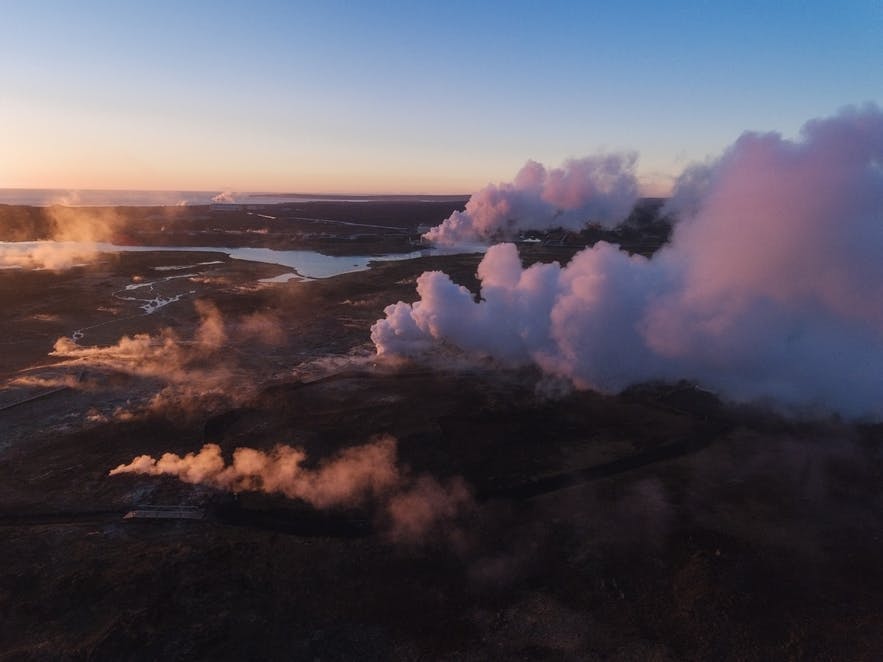 Steaming land. Photo by: 'Iurie Belegurschi'.
Steaming land. Photo by: 'Iurie Belegurschi'.
The Biggest Mistakes When Flying Your Drone in Iceland
Flying a drone isn’t easy. First, you need to know how to manoeuvre it. Then, you need to get to grips with shooting as you move. It takes a while to get up to speed in creating some amazing aerial photography.
When it comes to Iceland photography, a drone is a perfect device in shooting Iceland pictures. The only thing you don’t want to do is cause problems when you capture your aerial shots.
A drone is noisy due to the speed and amount of blades needed to keep it hovering. This is annoying for people who may have booked a special tour to see some of the visual highlights. Some of them are also capturing landscape scenes, and don’t want a drone blocking their shot.
Avoid other easy to make mistakes by reading our article here.
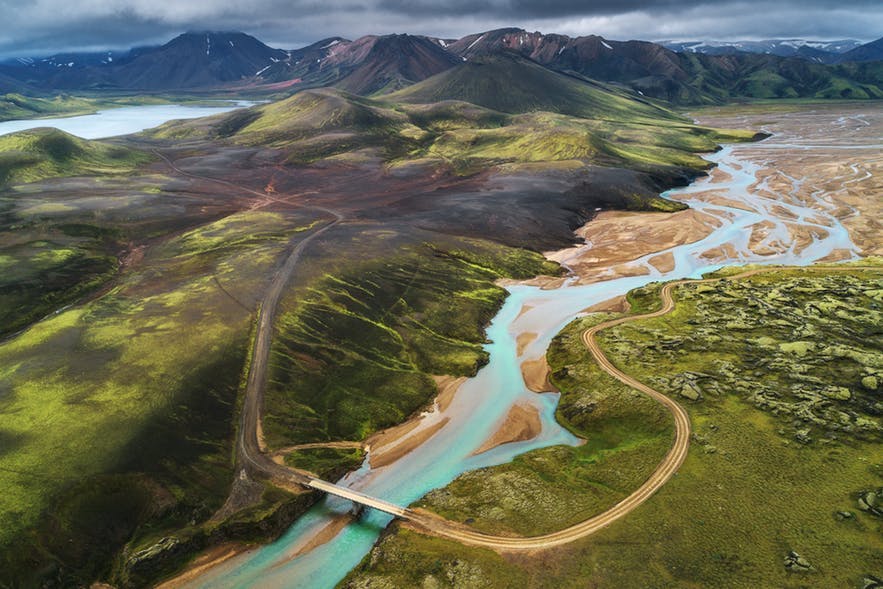 Glacial Rivers in the Highlands. Photo by: 'Iurie Belegurschi'.
Glacial Rivers in the Highlands. Photo by: 'Iurie Belegurschi'.
How to Fly a Drone in Iceland Without Annoying People
One of the most important rules when flying a drone is to stay away from crowds of people. It goes without saying that a malfunction of your drone could injury someone.
Accidents happen, and some can’t be prevented, which is why you need to take all the care you can. Safety is paramount when it comes to aerial photography with a drone.
Due to their noise and ability to reach most above ground areas, you could be accidentally annoying people. Some of those are there to capture their own Iceland pictures.
Tour groups, visitors and photographers can be easily annoyed. Especially when they can hear a loud buzzing sound or see a flying object in their shots.
For all the help you need in keeping the peace, have a look at our post.
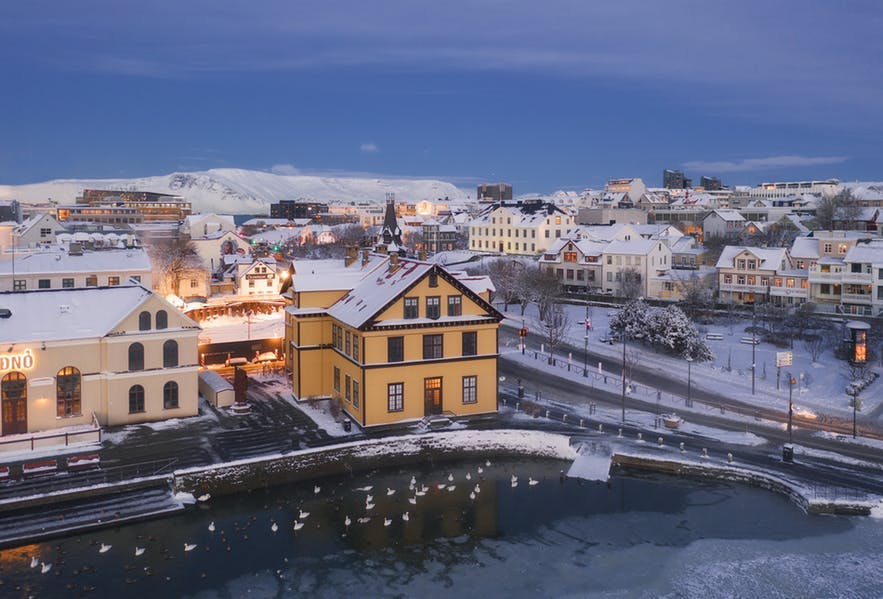 My favourite season. Photo by: 'Iurie Belegurschi'.
My favourite season. Photo by: 'Iurie Belegurschi'.
- See also: 5 Day Autumn Photo Workshop in Iceland
Weather
What to Photograph in Iceland Through the Seasons
Iceland presents many possibilities of stunning landscape photography shoots. But you need to be wary of the season you plan to visit.
You may think that Iceland is an island of ice and snow. You’d be right, but there are a few months where the weather is a little warmer. This is when you’ll want to aim for the flora and fauna elements.
There are two main seasons; winter and not winter. Both are cold, so you’ll want to make sure you dress for the occasion. Feeling uncomfortable will inevitably cut your photography sessions short.
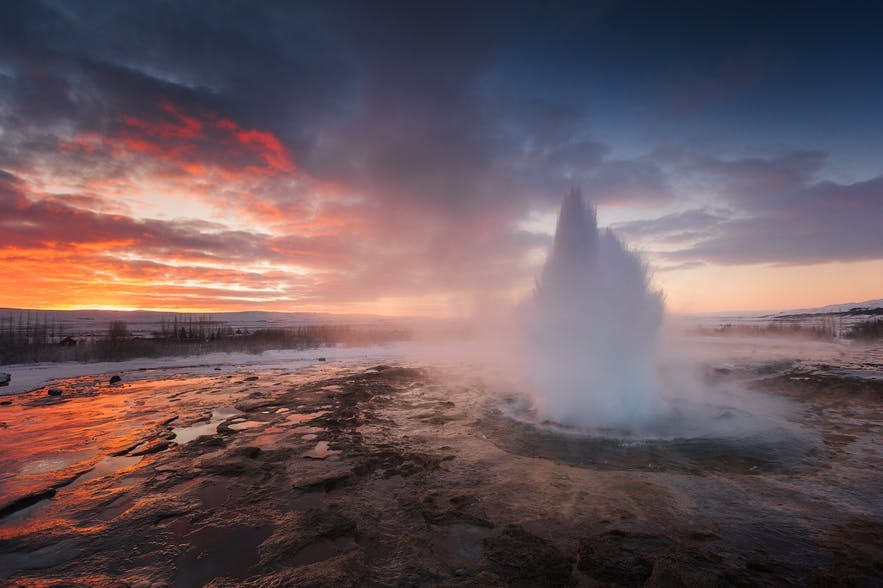 Try photographing the Golden Circle route during summer in Iceland. Photo by: 'Iurie Belegurschi'.
Try photographing the Golden Circle route during summer in Iceland. Photo by: 'Iurie Belegurschi'.
What it's Like to Photograph Iceland in September
No matter where you find yourself shooting landscapes, September is a brilliant month. The tourist season has ended, the sun becomes less harsh and the wild atmosphere returns.
If you’re looking for more natural views then this is the month for you. Autumn brings forth a whole new range of colours. Yellows turn to greens and greens turn to browns. They are a perfect compliment to any landscape composition.
This is when the days give way to the night earlier, so you’ll have less time to get the daytime shots you want. But, nighttime brings the Northern Lights. It's hard not to take amazing Iceland pictures when they appear.
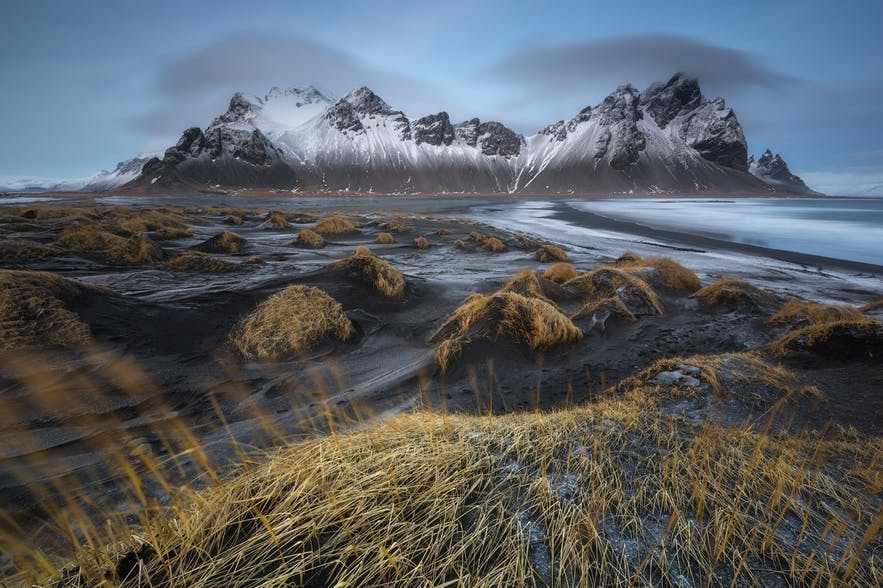 Autumn at Vestrahorn. Photo by: 'Iurie Belegurschi'.
Autumn at Vestrahorn. Photo by: 'Iurie Belegurschi'.
8 Tips for Photographing Fall Colours in Iceland
If you are planning to visit Iceland to capture landscapes, don’t overlook the autumn season. This is when the colours start to change, and the flora is still waiting for the blanket of snow and ice to return.
Colours are a very important part of all types of photography. Landscapes work well as the colours are usually complimentary. Each strengthens the tone, shade and hue of the one preceding it.
Our tip to you is to use a polarising filter. Not only does it darken the blue skies, but it also saturates the colours you expect to find. Reflections and glare from the sun are things you wont need to worry about.
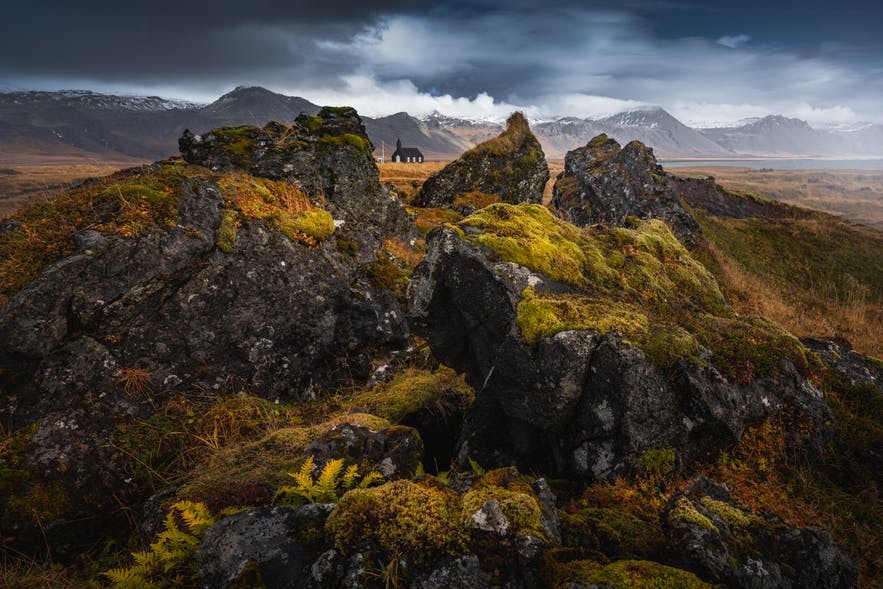 Pay attention to the histogram to ensure that you haven't blown the highlights or clipped the shadows. Photo by: 'Albert Dros'.
Pay attention to the histogram to ensure that you haven't blown the highlights or clipped the shadows. Photo by: 'Albert Dros'.
8 Things to Know About Photographing Iceland in Winter
Winter in Iceland is the most common season you will experience this beautiful island in. Most other Iceland pictures that you've probably seen have most likely included white blanketed landscapes and tiny icebergs on black sandy beaches.
It is a magical time, and reminiscent of a land of fairy tales. The bonus is that everything that Iceland has to offer visually changes at different times of the year. .
Waterfalls freeze over. Snow-covered mountain tops are now also surrounded by snow blanketed fields and pastures. With all this white, it is easy to miss out on the details. We recommend you to capture a wide landscape shot with the most interesting element in the foreground.
 Winter light can be surreal in Iceland. Photo by: 'Iurie Belegurschi'.
Winter light can be surreal in Iceland. Photo by: 'Iurie Belegurschi'.
Why Iceland is the Perfect Place for Midnight Sun Photography
The Midnight Sun is one of nature's truly magnificent attributes. It is only experienced in a handful of places on the planet. This is when you can see the sun as the clock strikes 12am.
Due to the latitude of Iceland, it is much closer to the angle of the sun. Between June and December, the sun doesn’t drop below the horizon. Yes, you get a 24-hour period of sun for around 26 full weeks.
For some, it may sound like a nightmare. But for photographers, it means that you won’t miss out on that beautiful and natural orange glow. You can grab it hitting your Iceland landscape at any time. It's the perfect addition.
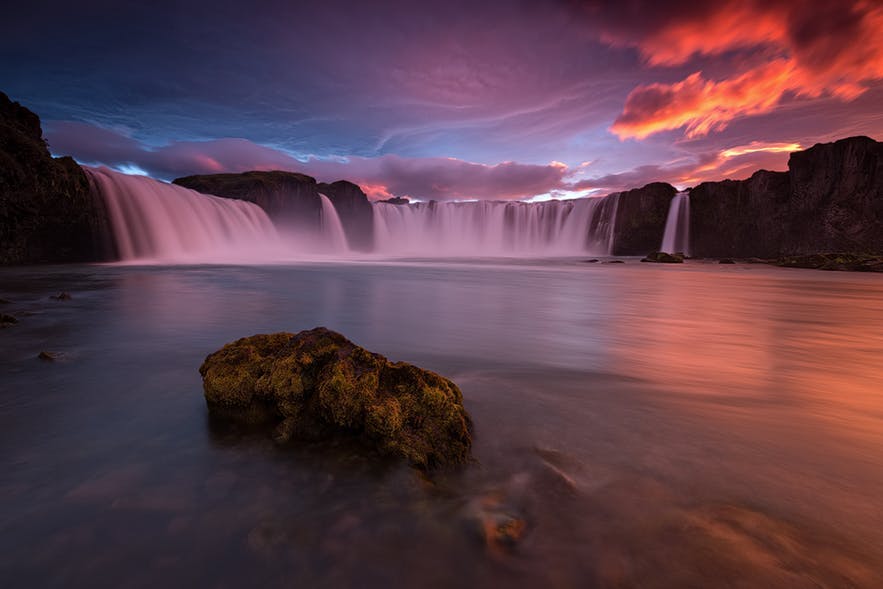 Gódafoss waterfall. Photo by: 'Iurie Belegurschi'.
Gódafoss waterfall. Photo by: 'Iurie Belegurschi'.
Post-Processing
How to Back Up Photos While Travelling in Iceland
Iceland is a little far away for some of us photographers. Yet, it sticks out like a sore thumb. There aren’t many places that can give you the amount of photographic prospects as this northern island can.
They speak an unusual language, and their seasons are longer and colder than most of us can imagine. Yet, if you do come here to photograph, you’ll need the same tools and devices as photographing anywhere else.
Backing up your Iceland pictures are of primary concern. You don’t want to place all your faith in multitudes of memory cards. After all, they take up space.
Here, you’ll find the best information on how to backup your images while traversing the white kingdom. It’ll make sure your images arrive home, safe and sound.
 Photographing under the glacial ice is only one of Iceland’s beautiful attractions. Photo by: 'Iurie Belegurschi'.
Photographing under the glacial ice is only one of Iceland’s beautiful attractions. Photo by: 'Iurie Belegurschi'.
About the author: Craig Hull is a freelance photographer and videographer based in Eastern Europe. You can find more of his work on his website or by following him on Facebook and Twitter.
Iceland is the perfect place to practice your landscape photography skills, on location and in-field! Check out our range of Iceland photo tours and workshops.
Other interesting articles

The Best Landscape Photographers You Need to Follow in 2020
Do you need a bit of inspiration in your life? Have you been looking for new and exciting places to photograph? Whether you're in search of a particular style or the strongest photographers in the a...Read more
8 Tips to Improve Your Landscape Photographs
When I first took up landscape photography, I often wondered why my photos did not look like those I admired in photography books. I was visiting the same places as I saw in the books but my results...Read more
25 Useful Tips to Quickly Improve Your Landscape Photography
Whether you’re just starting out in landscape photography or even if you’ve been doing it for a while now, sometimes it can be easy to get stuck in a creative rut. Find out the 10 Essential Tips f...Read more








